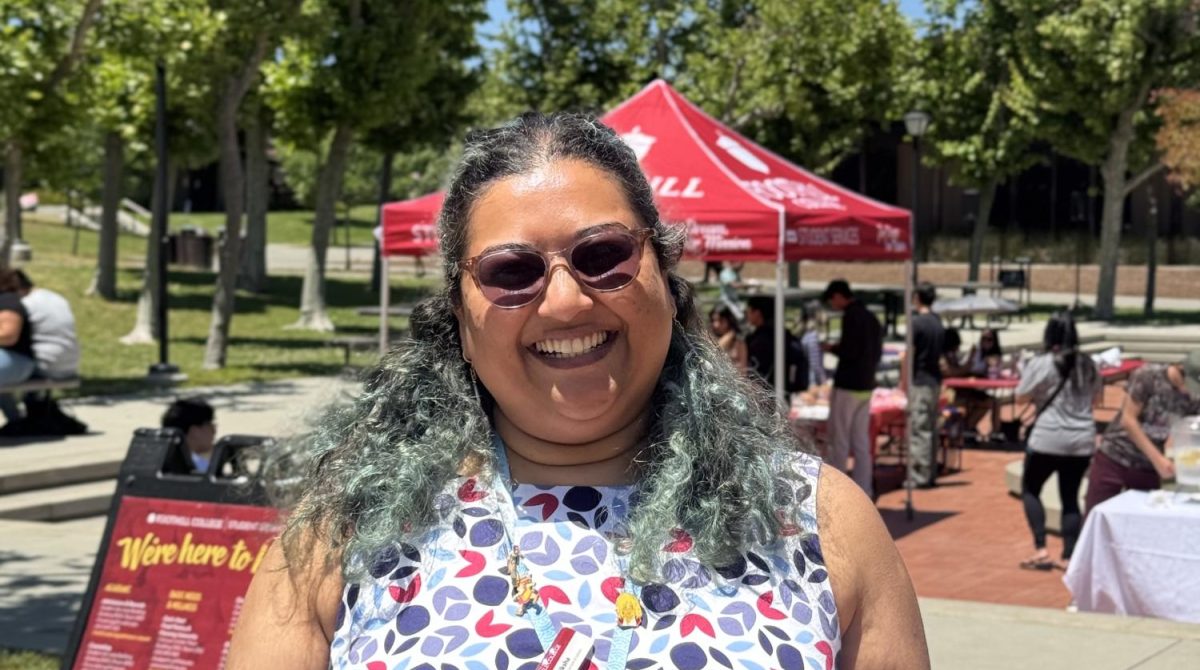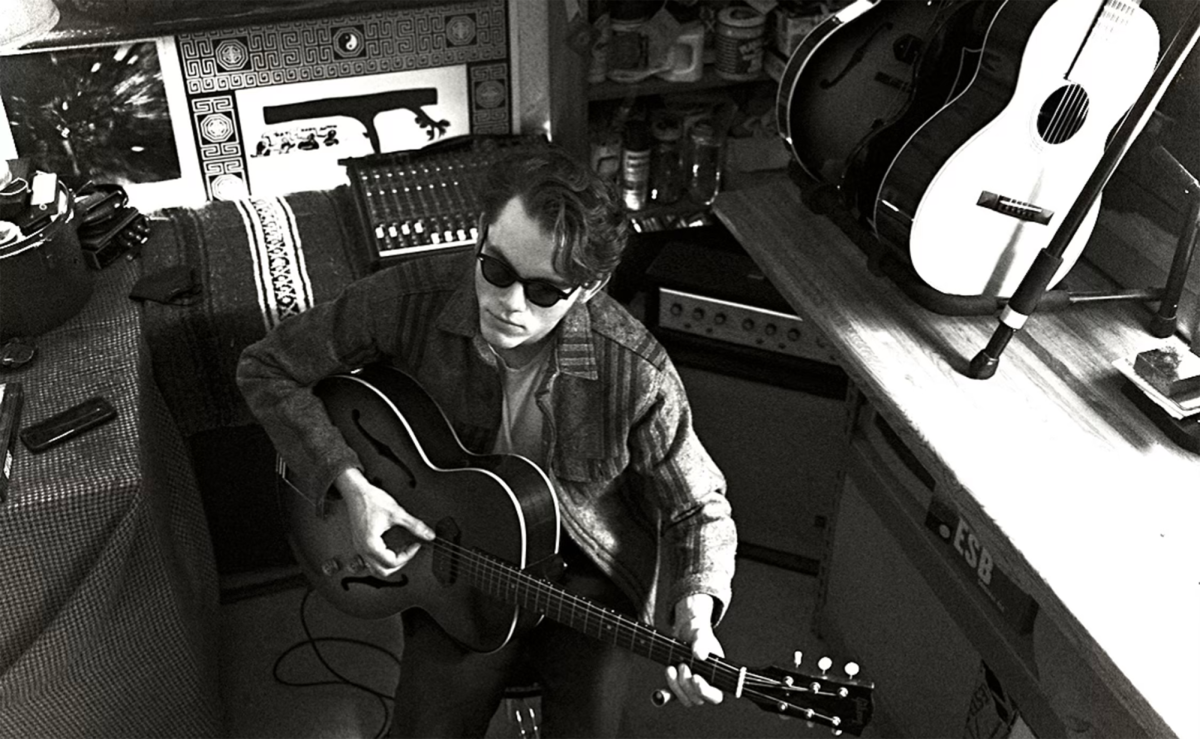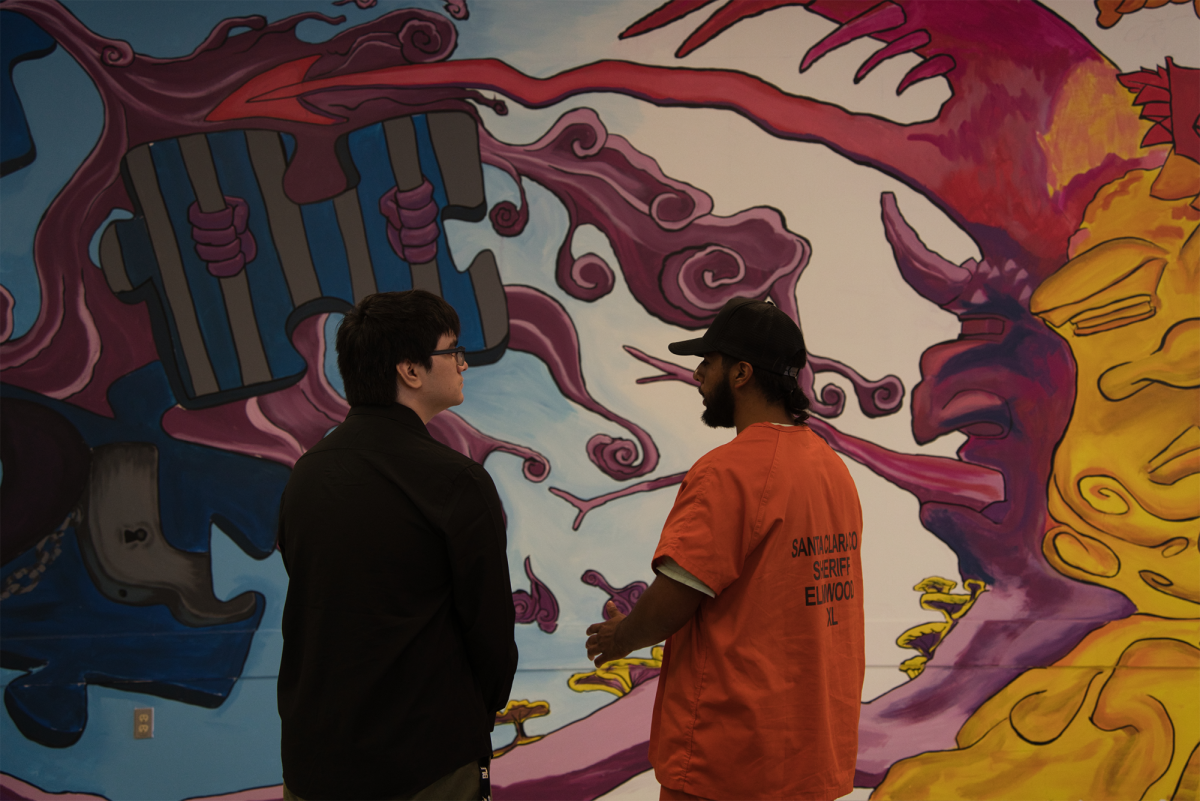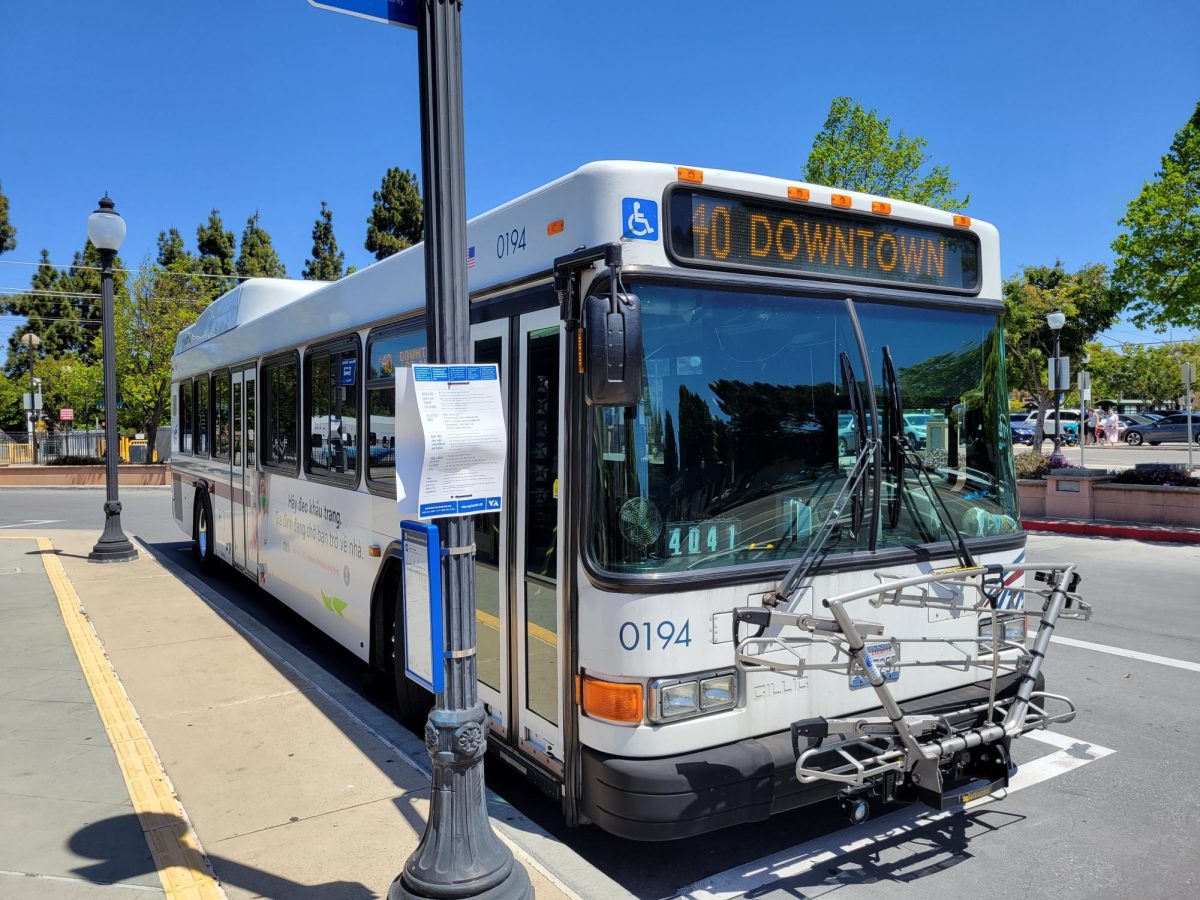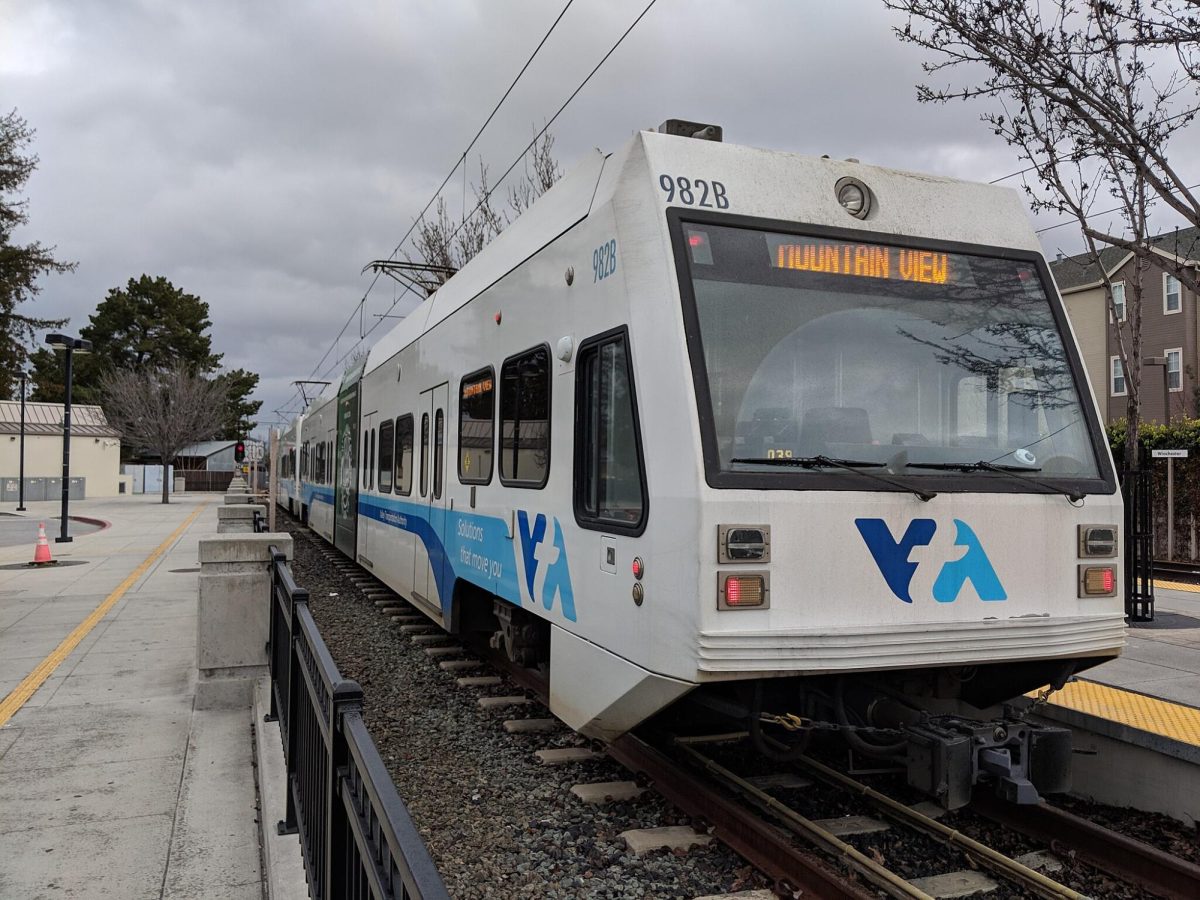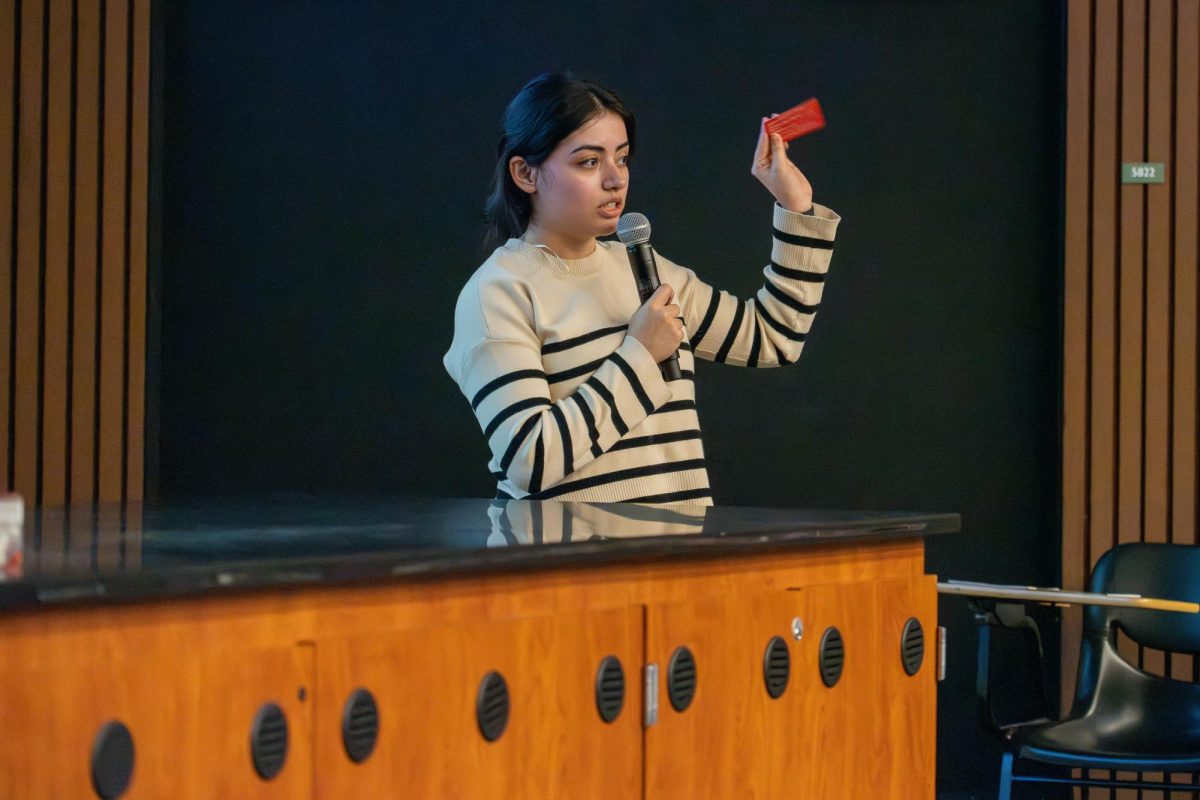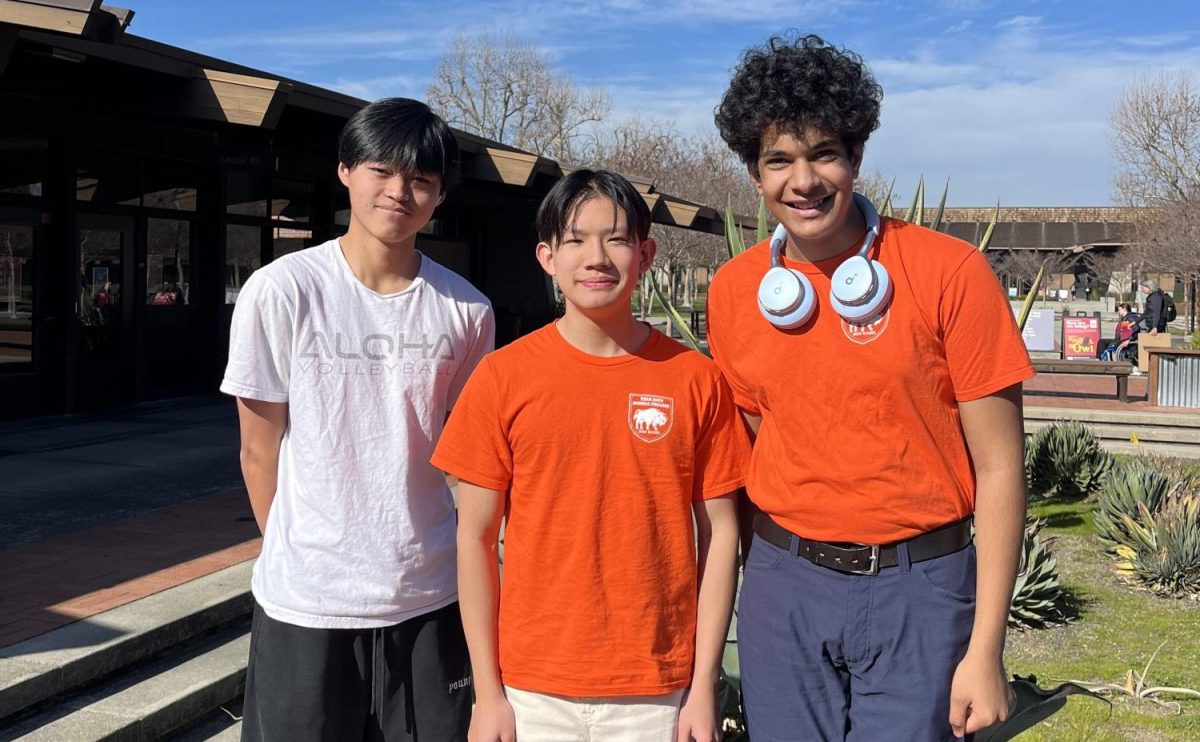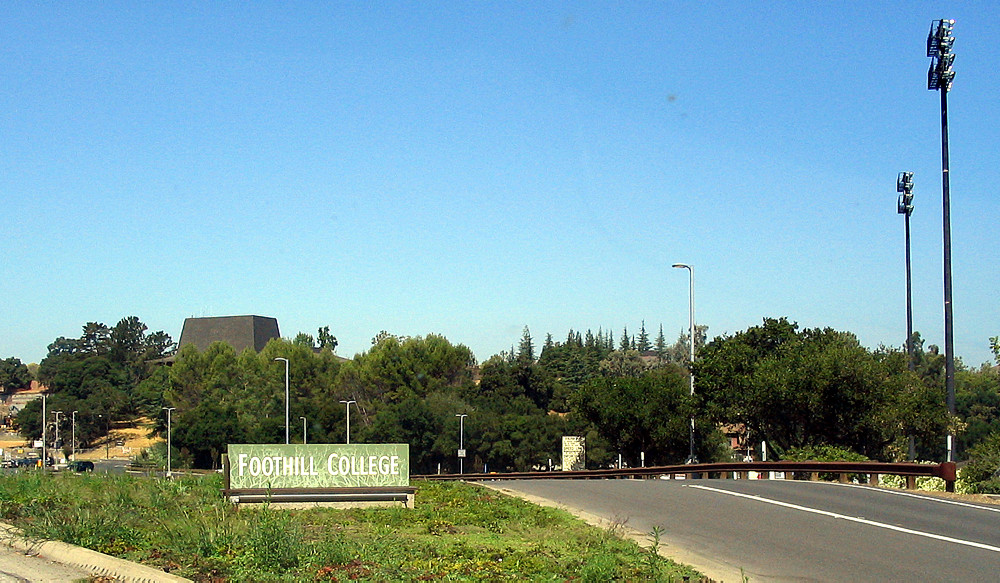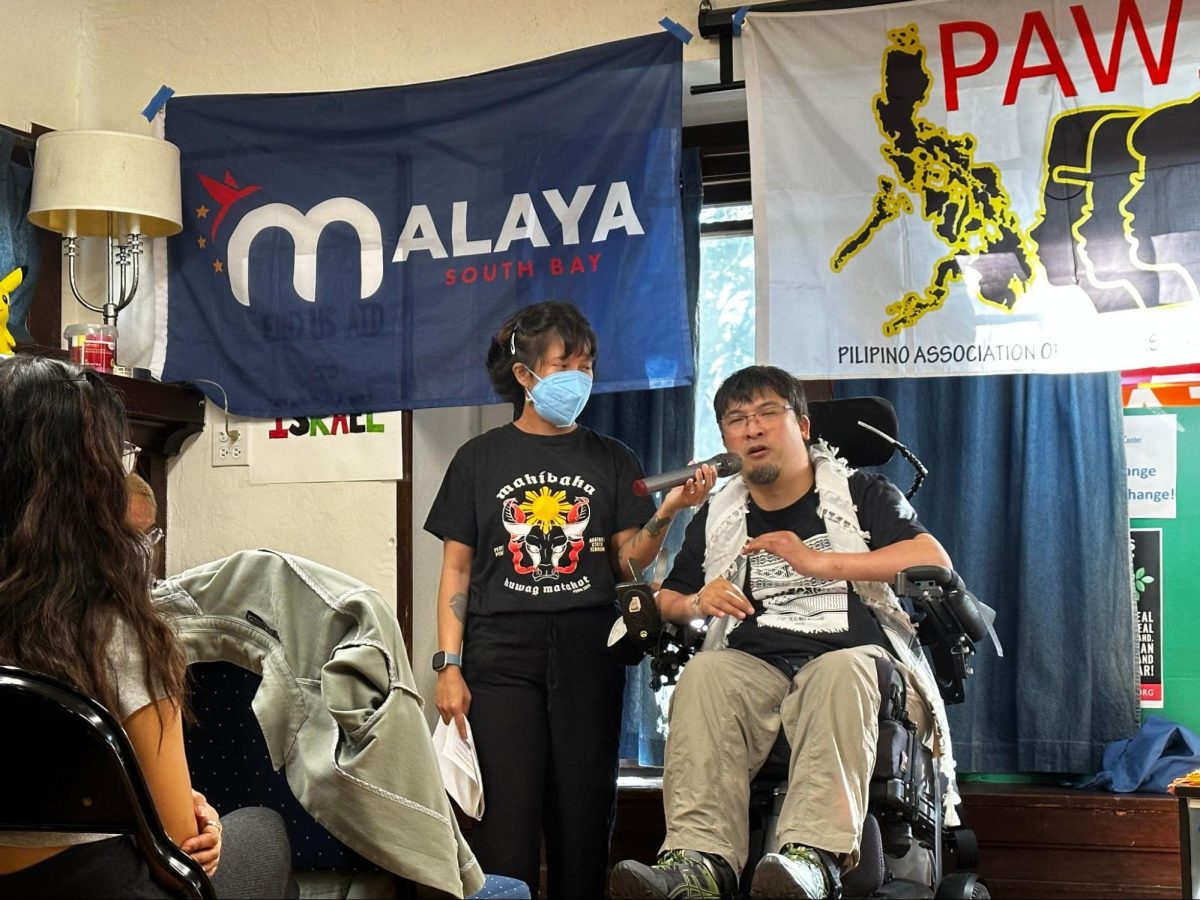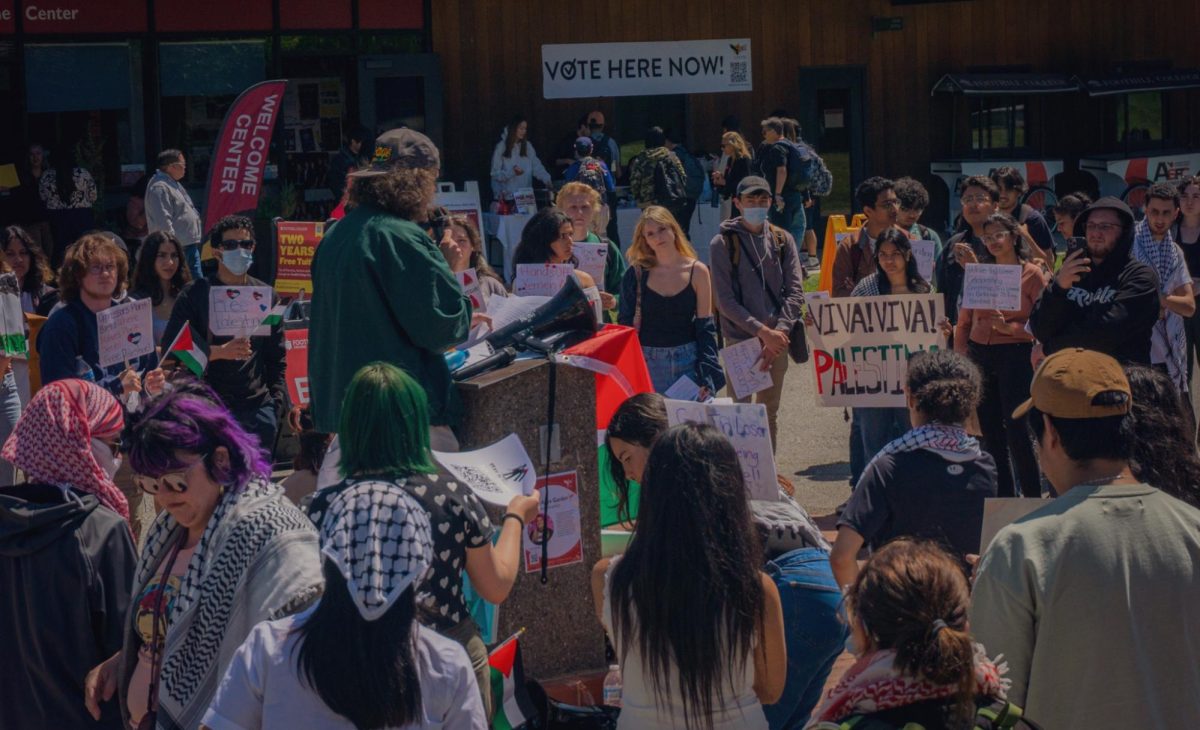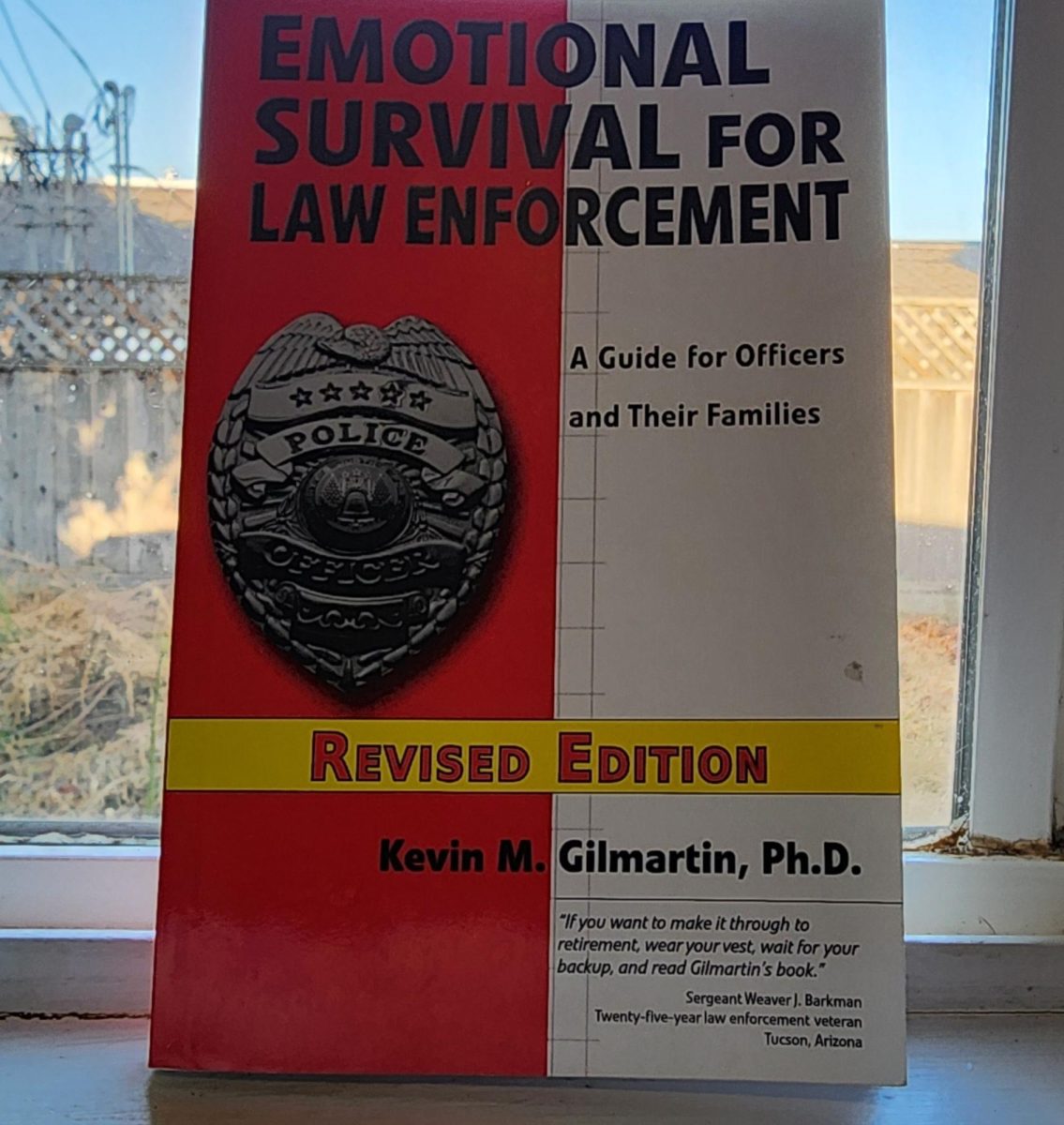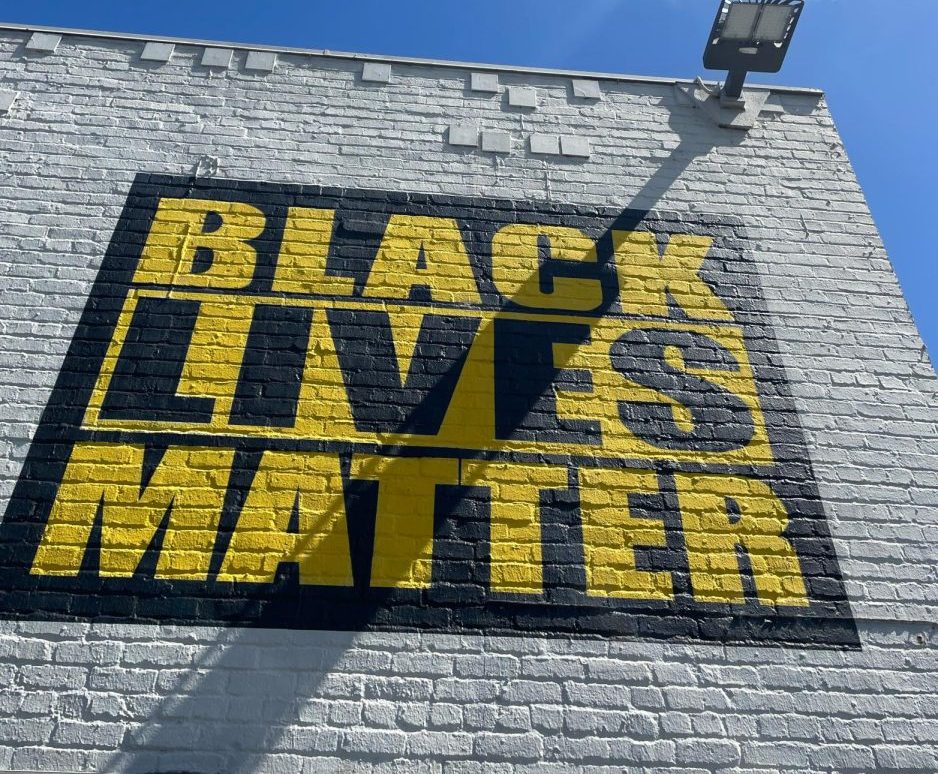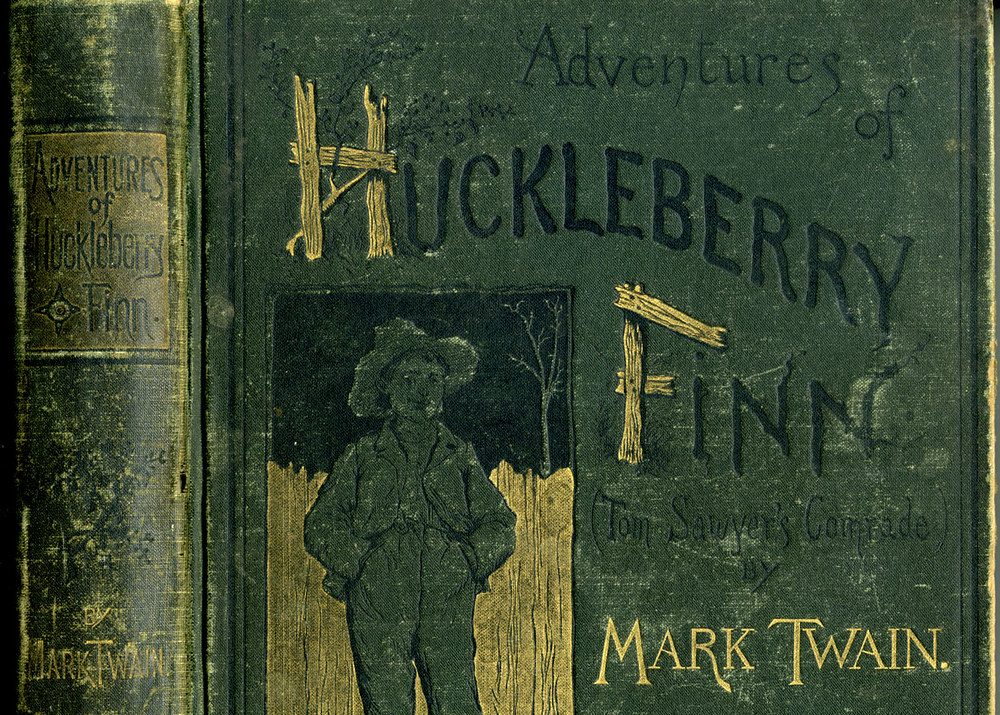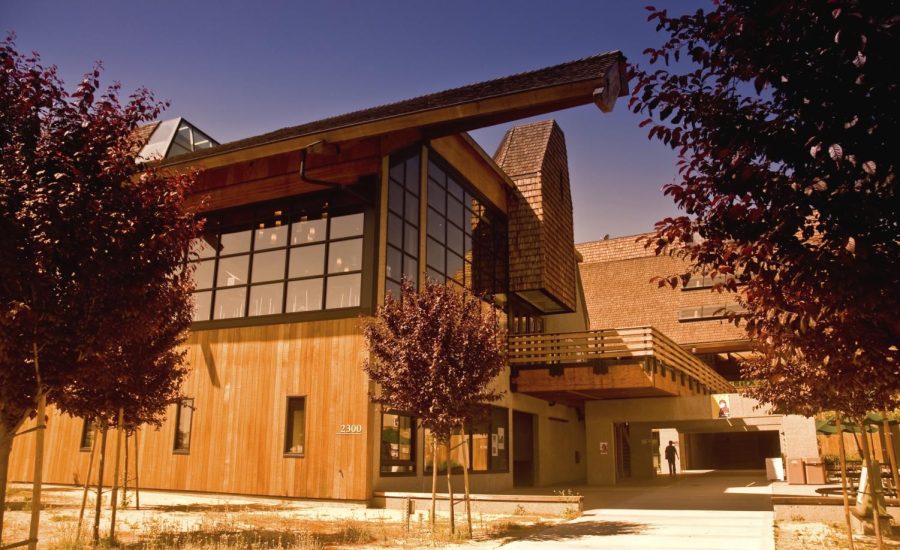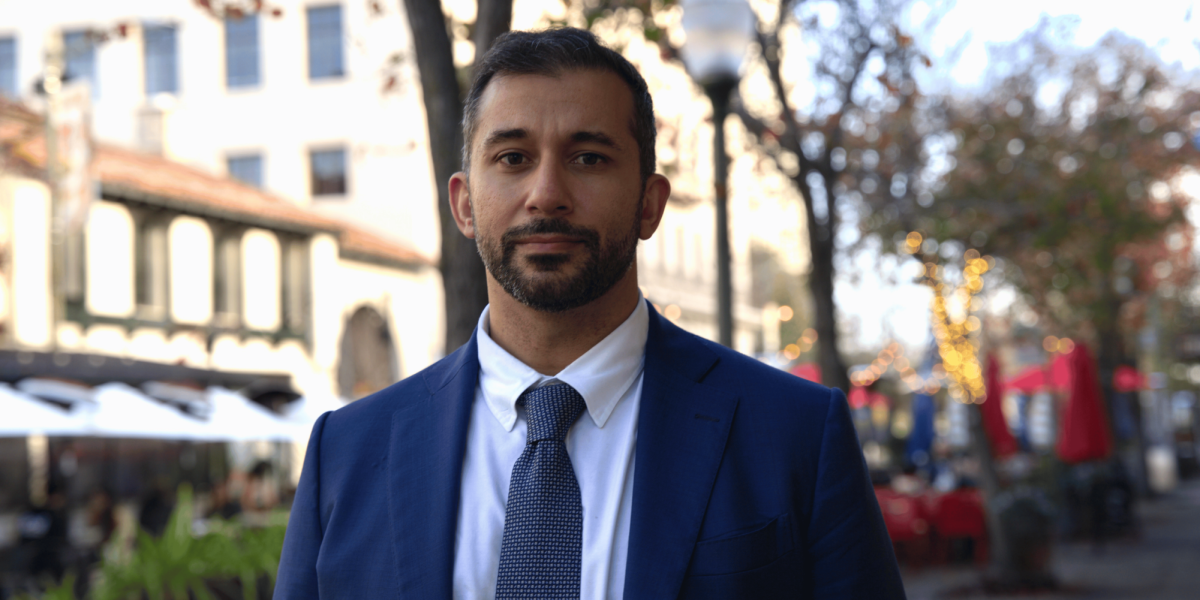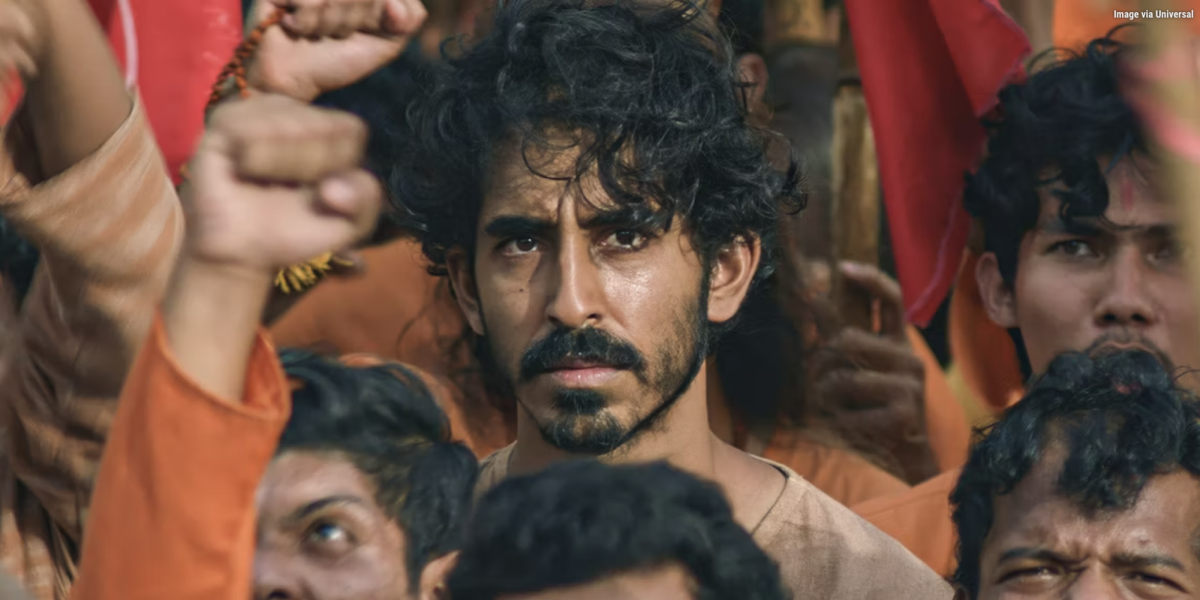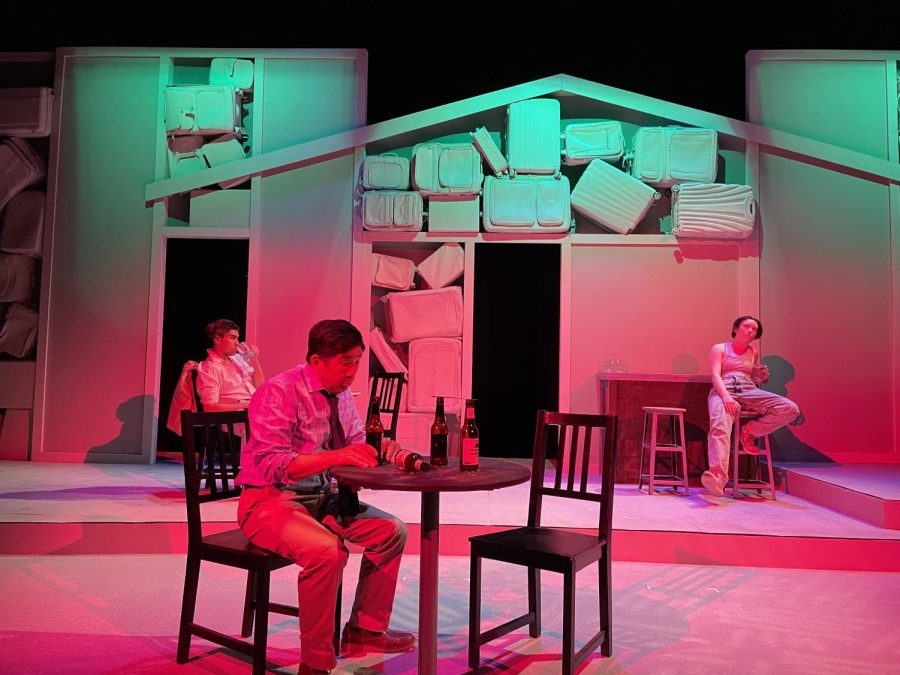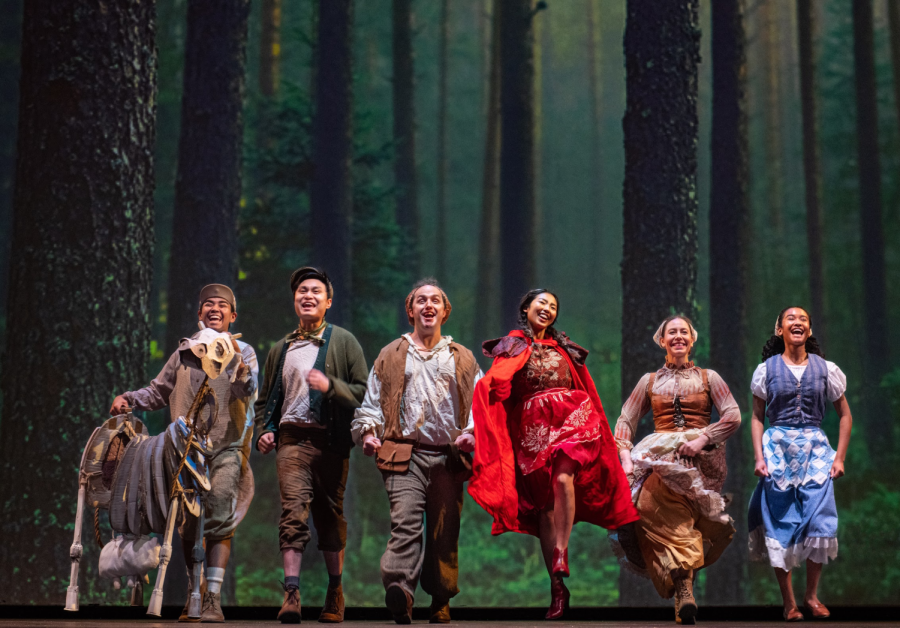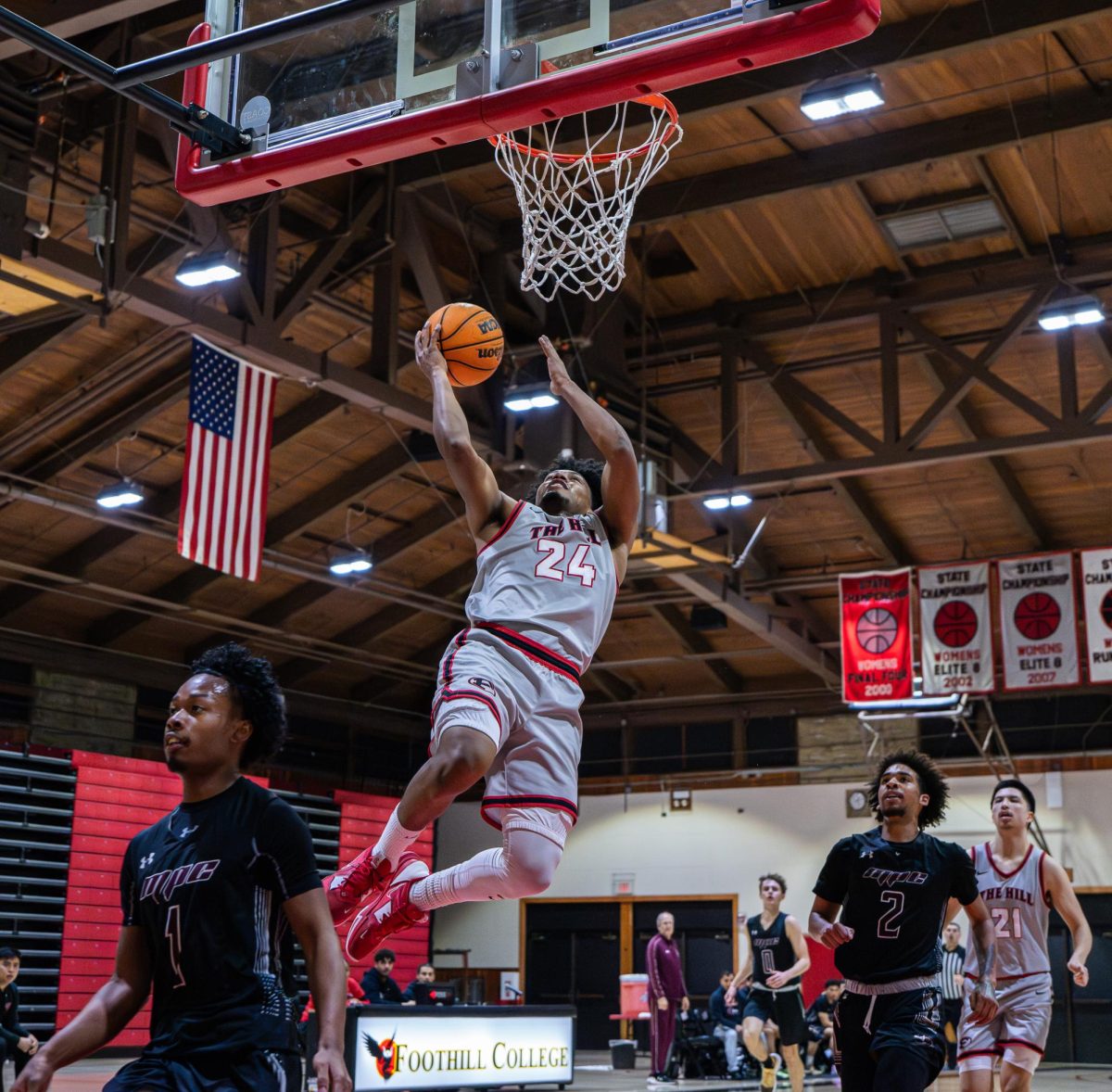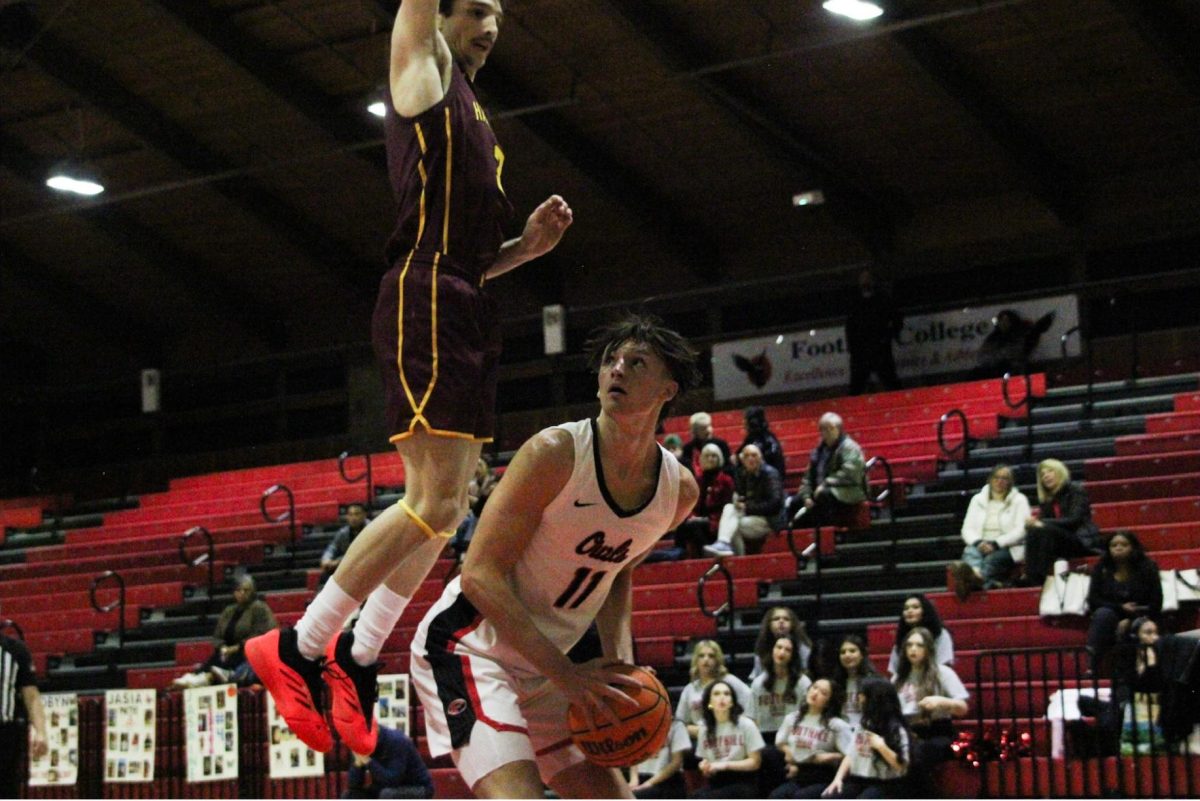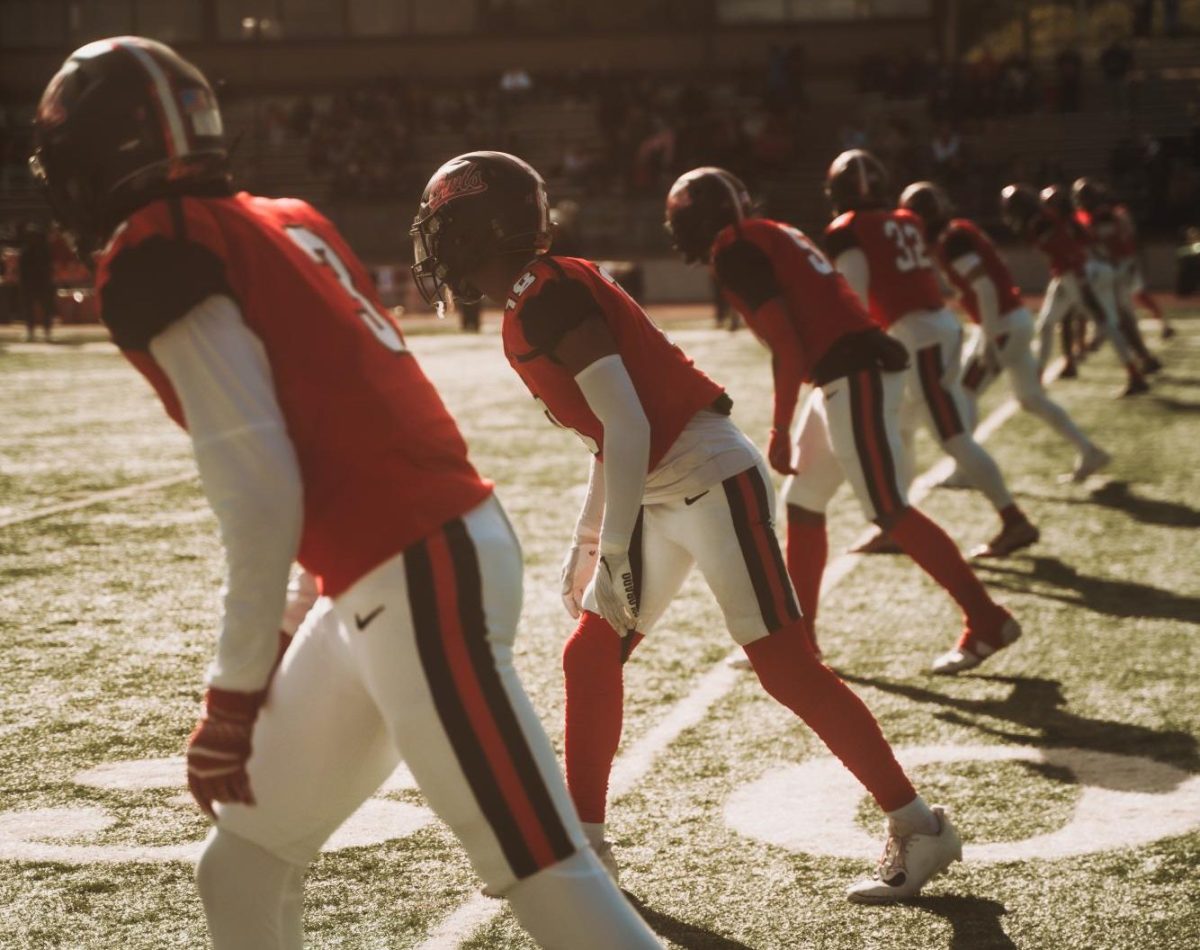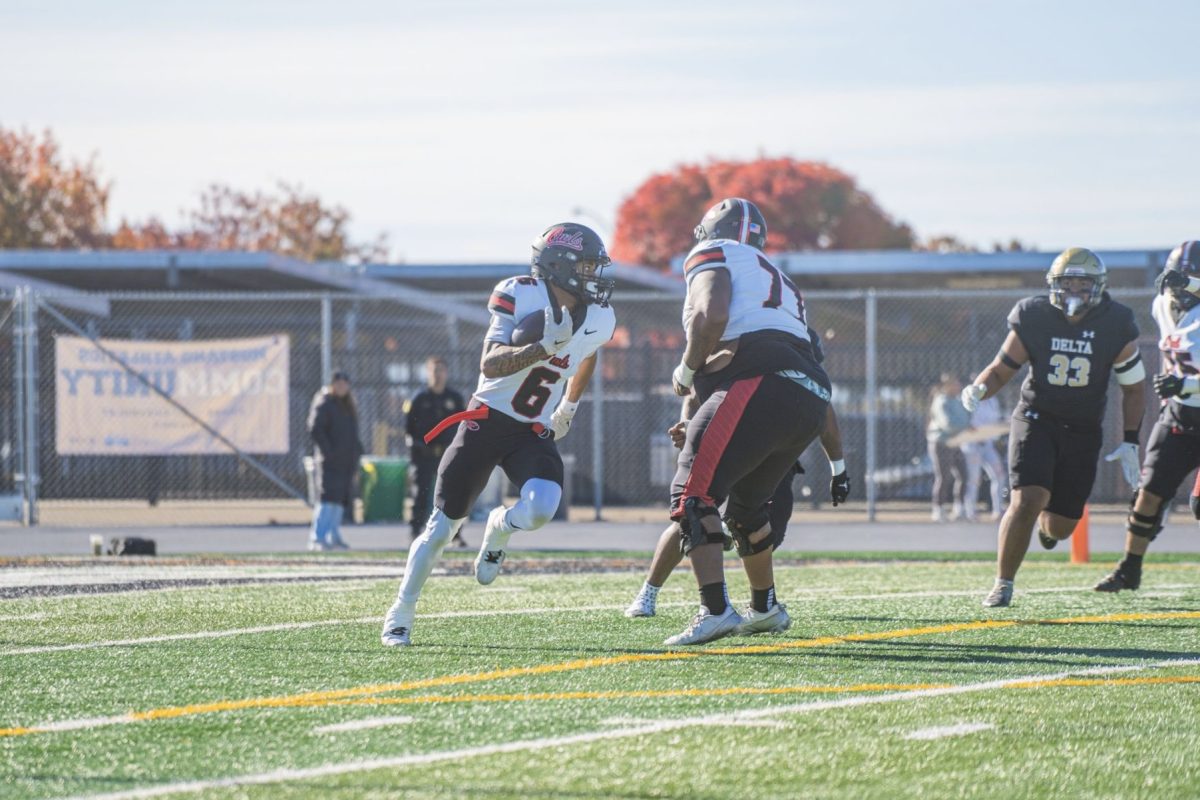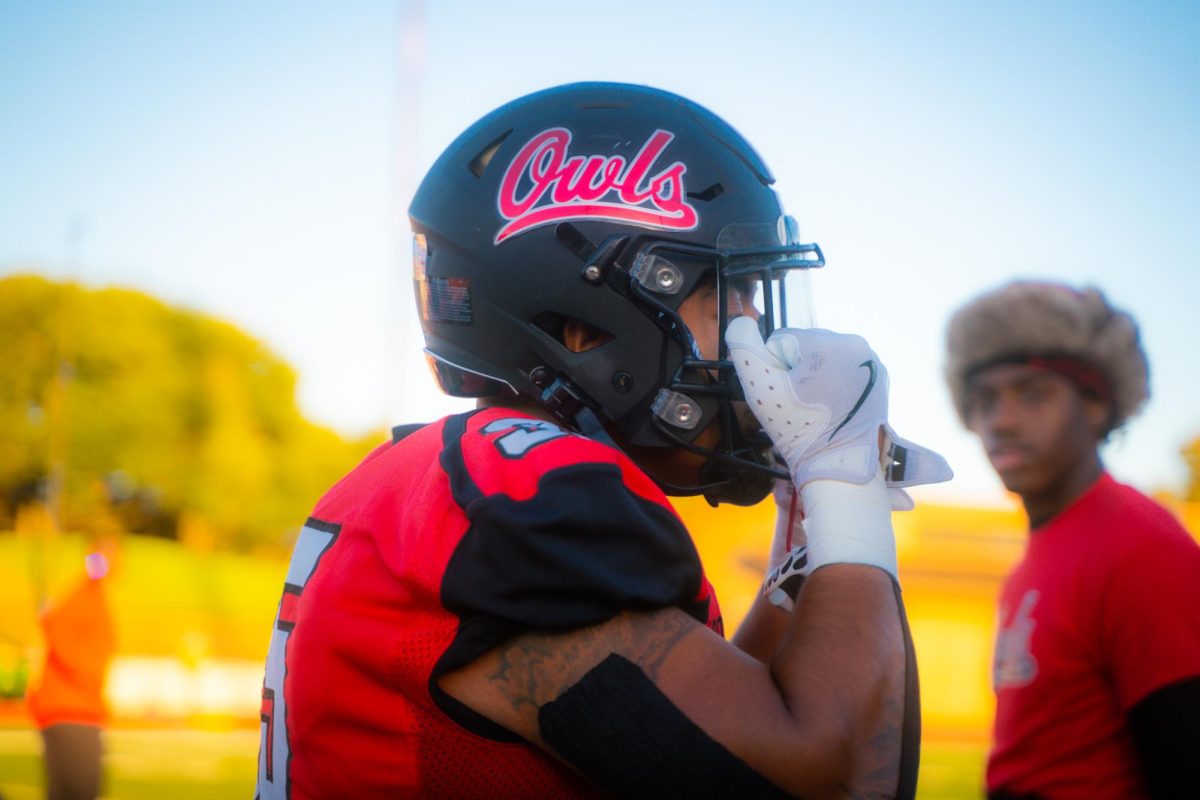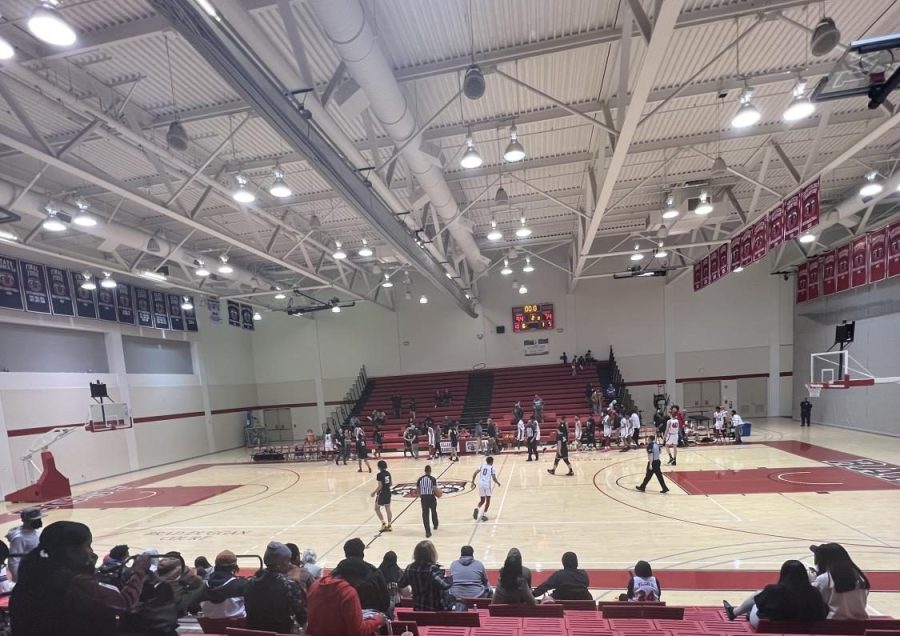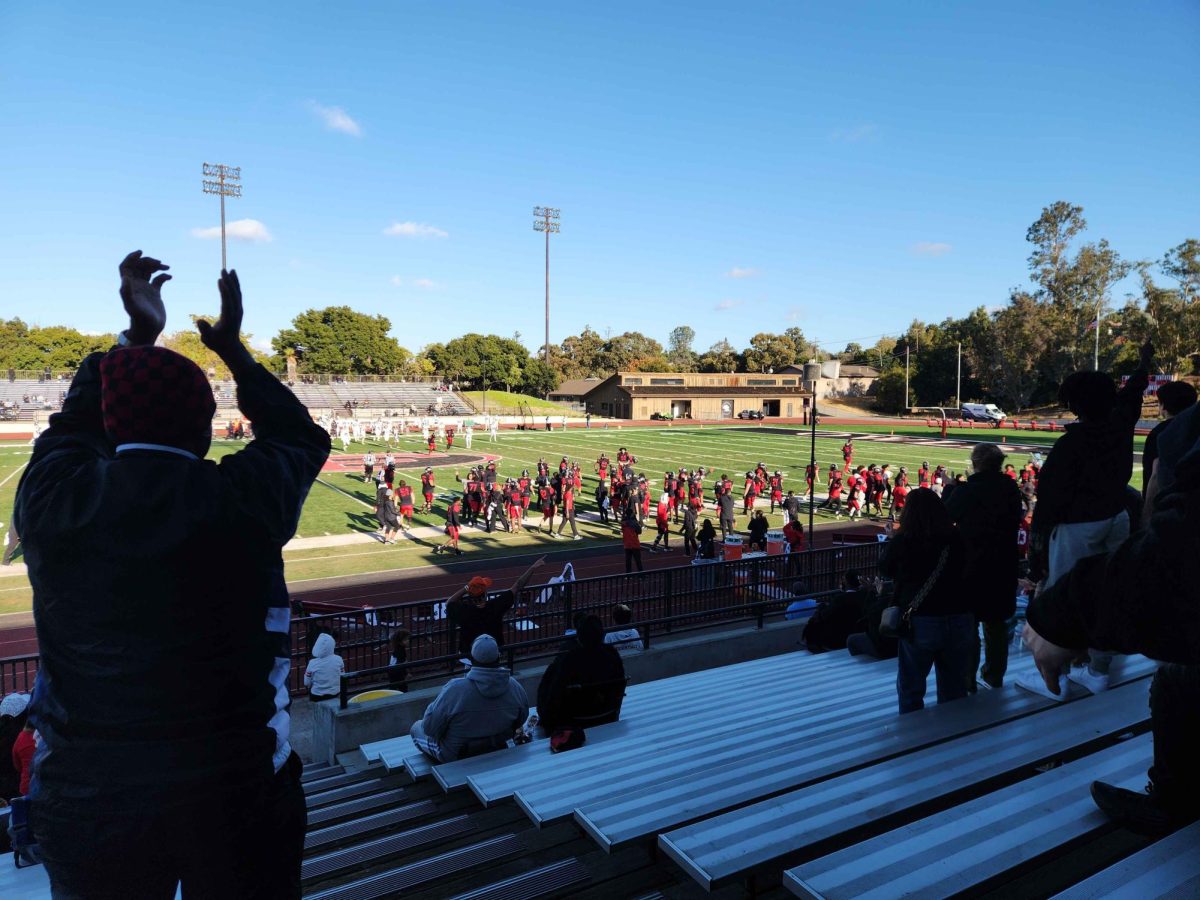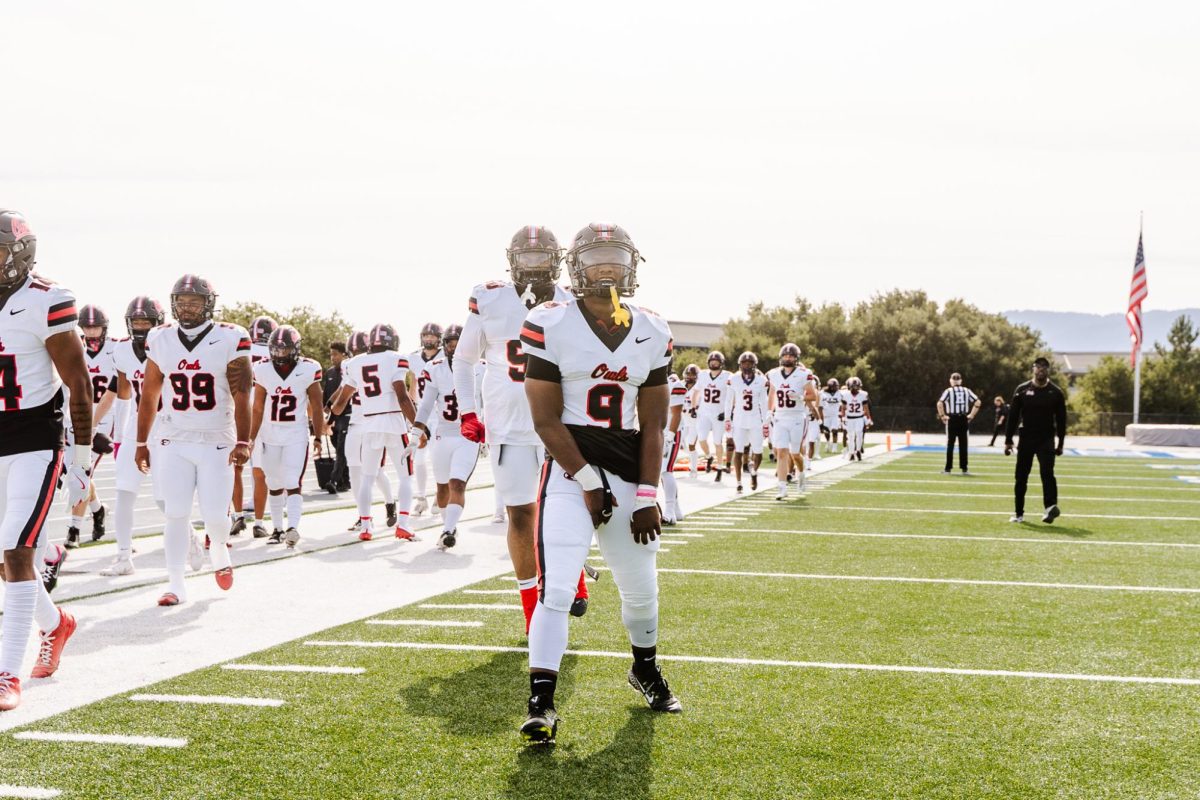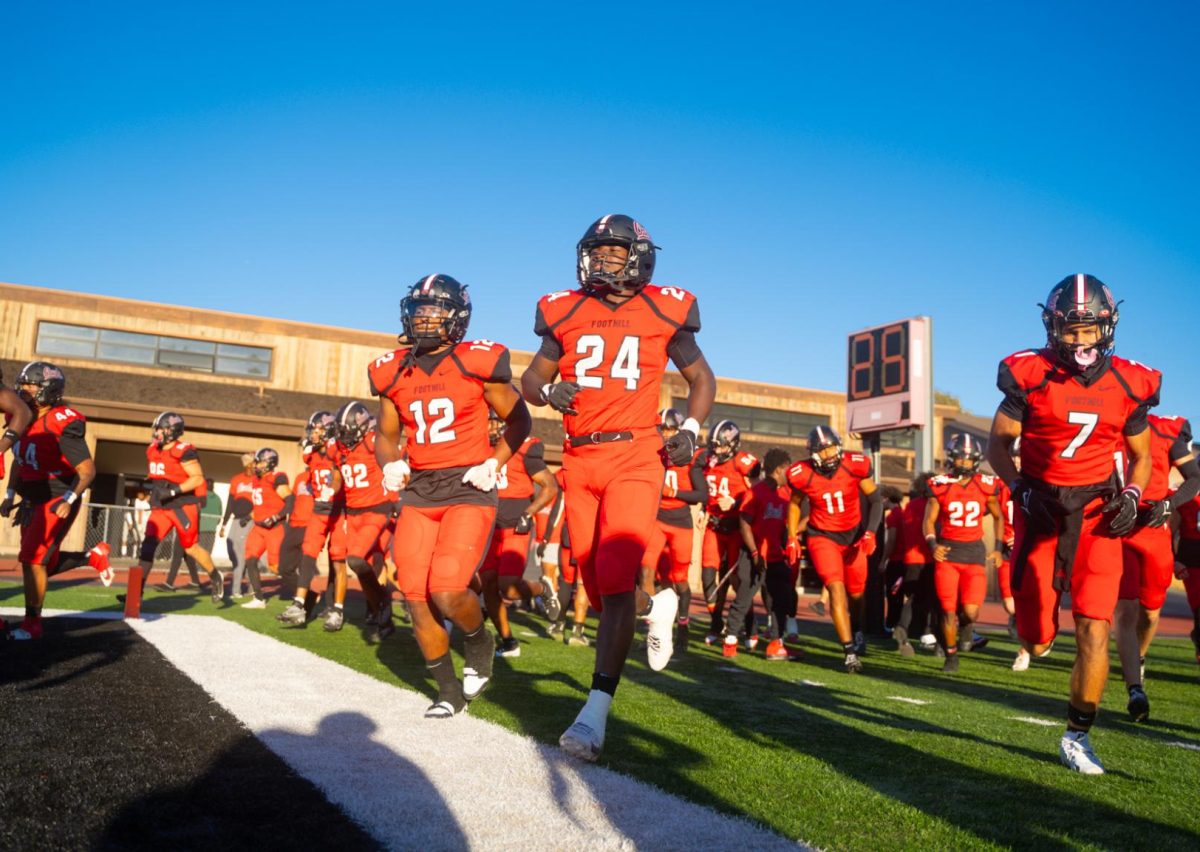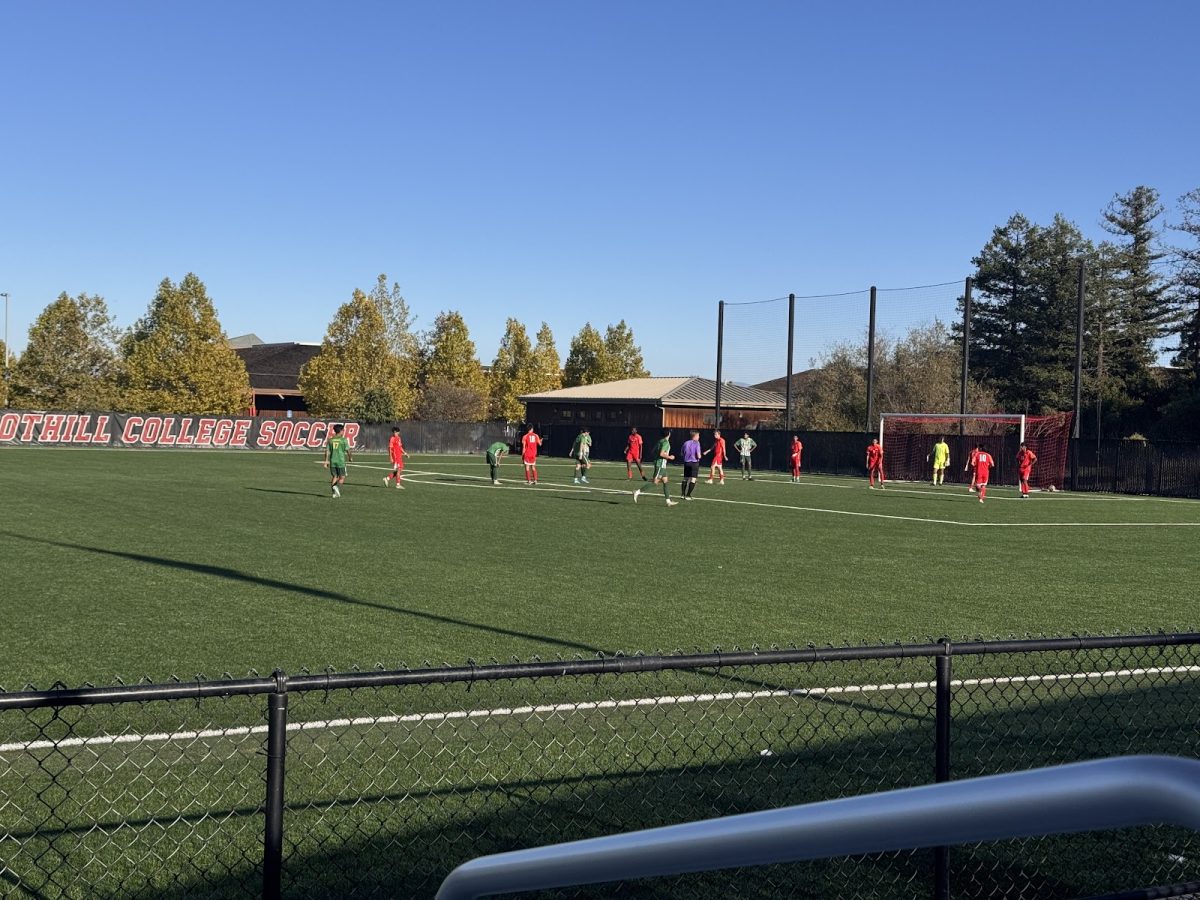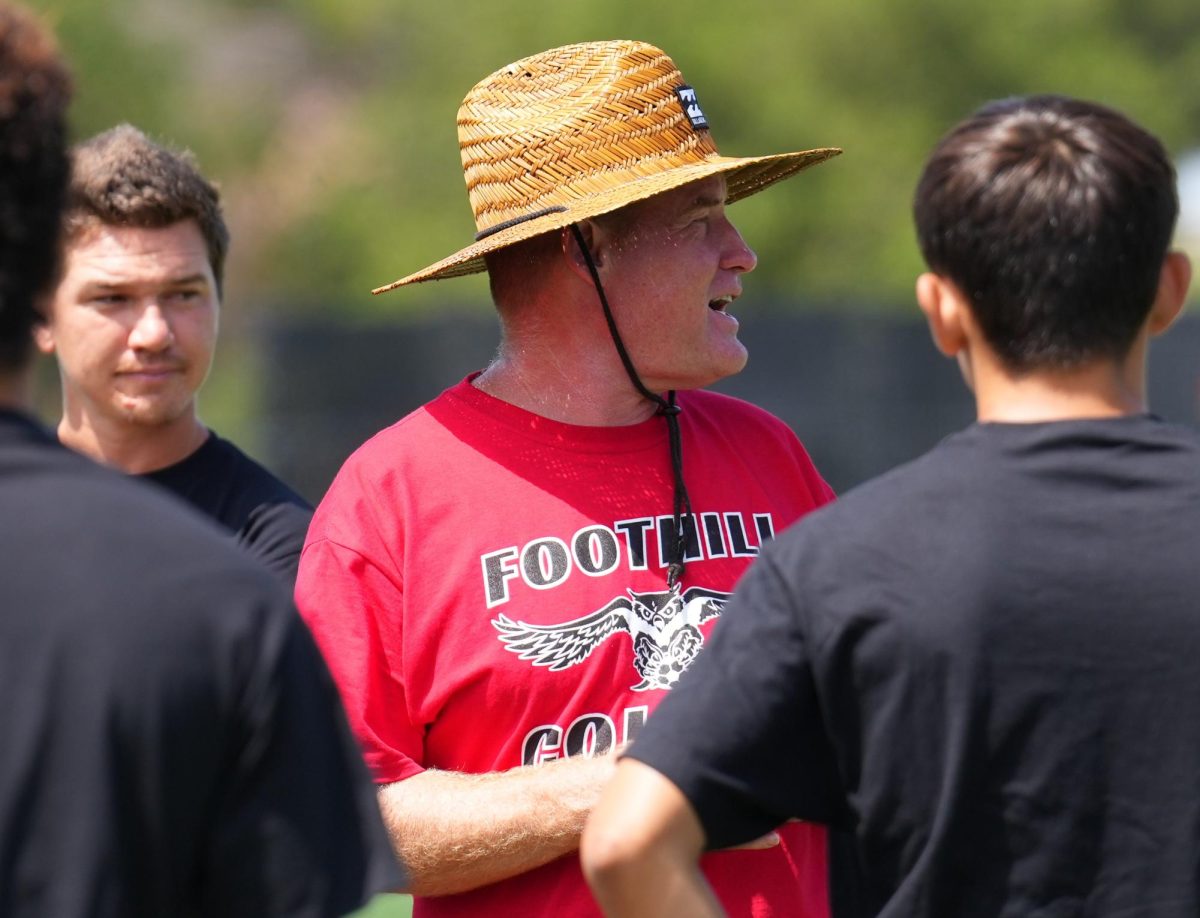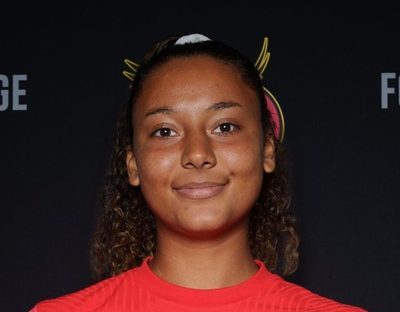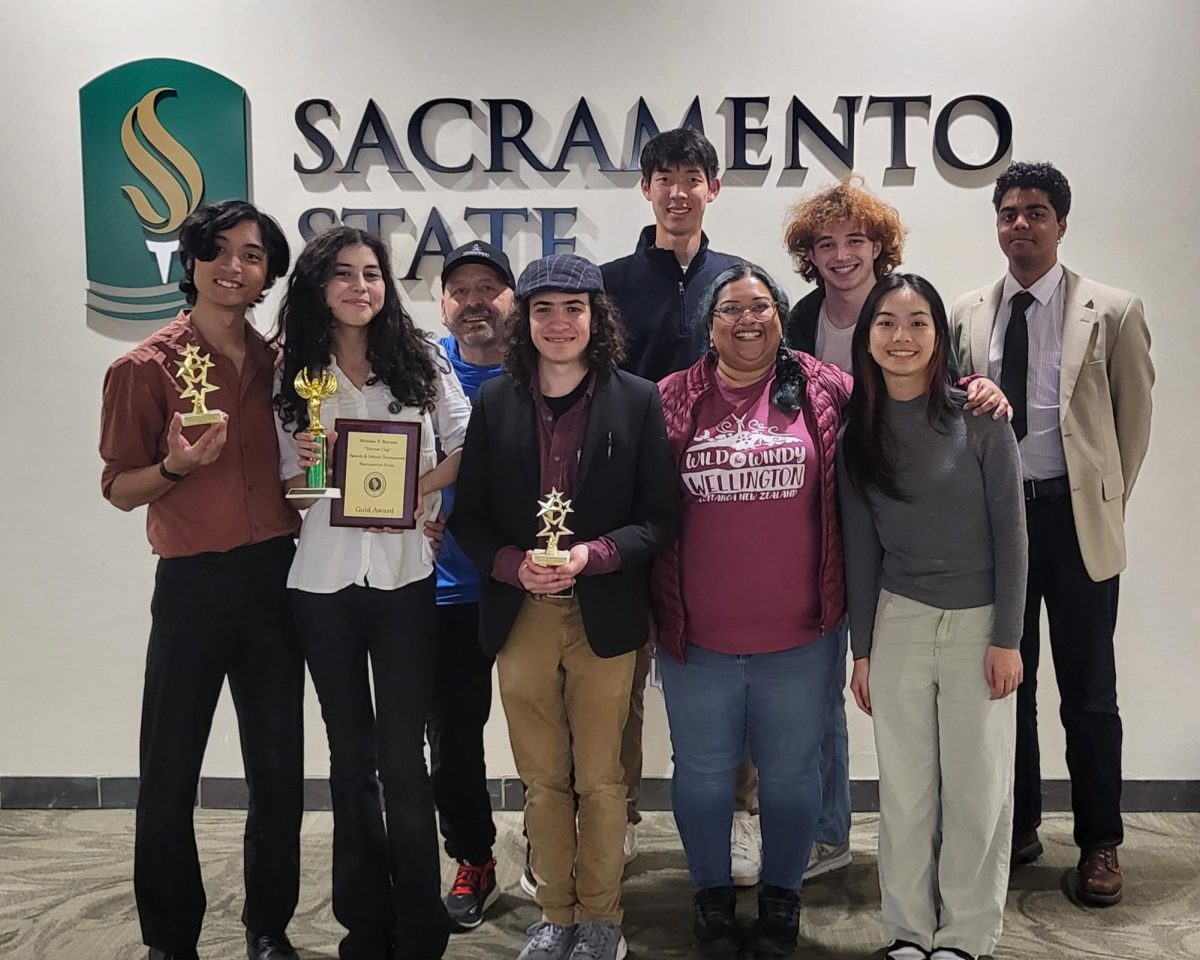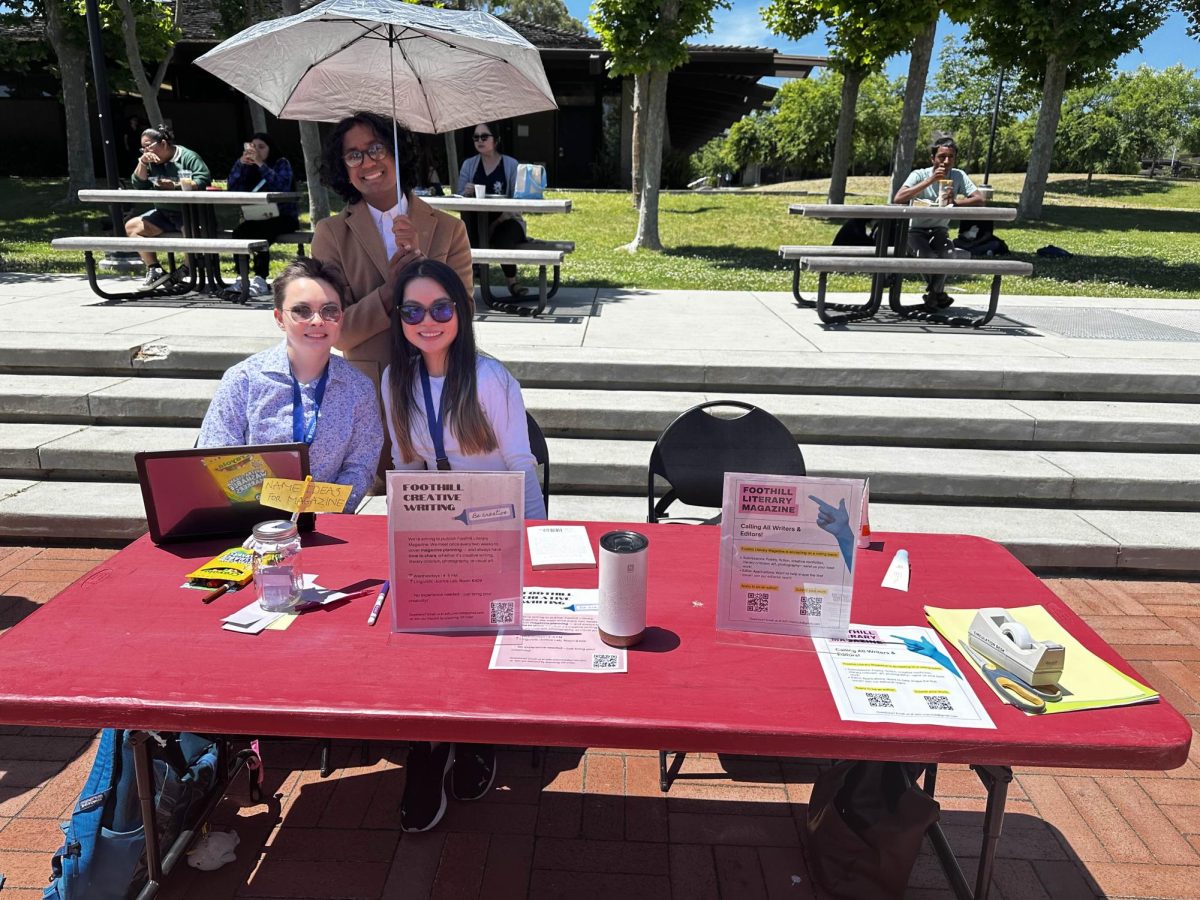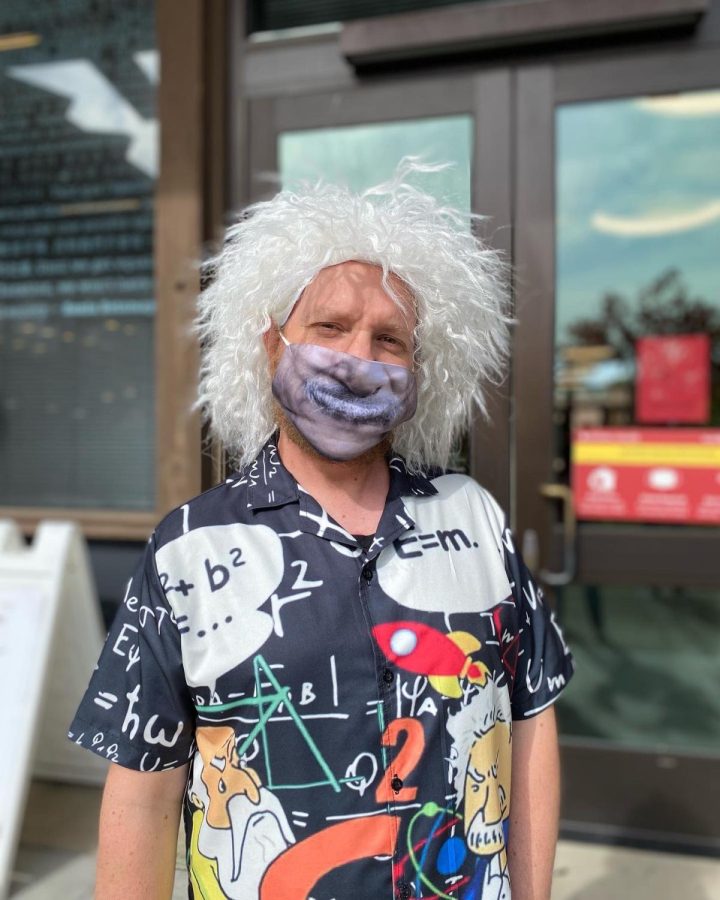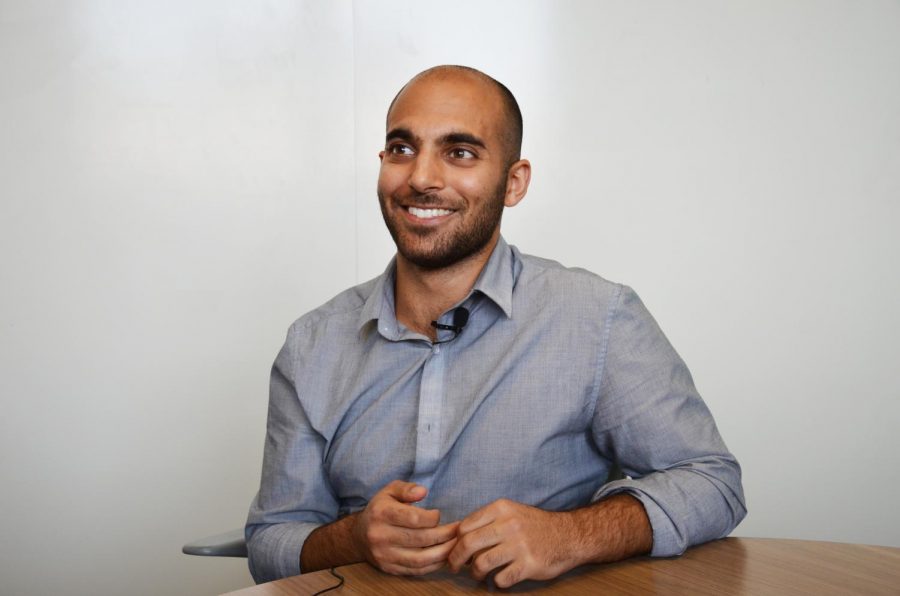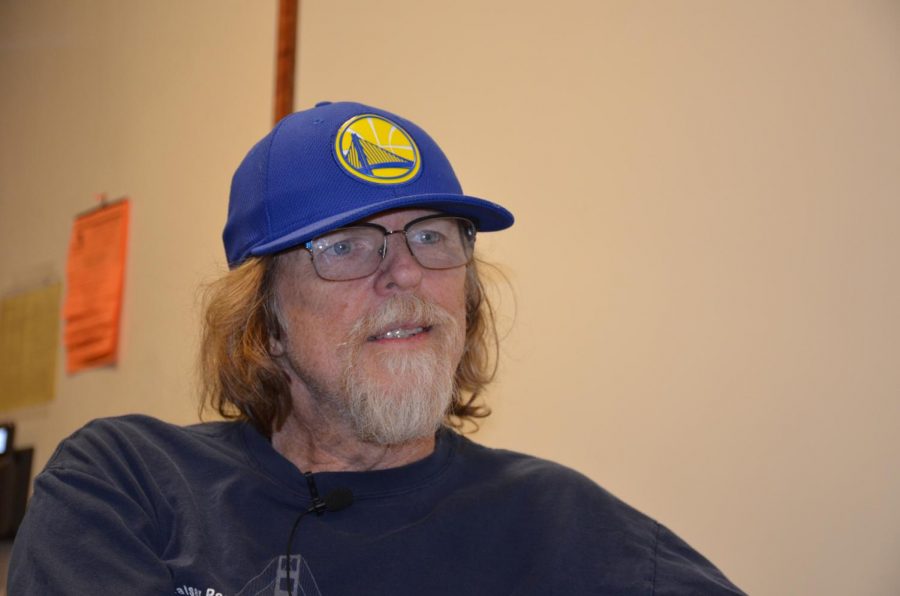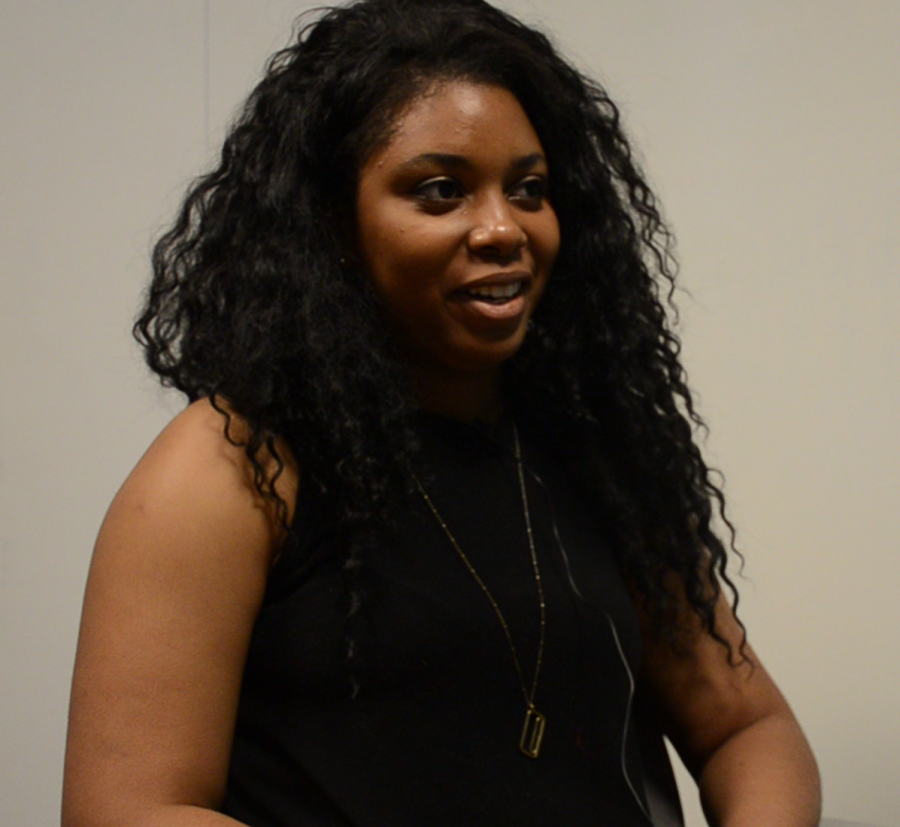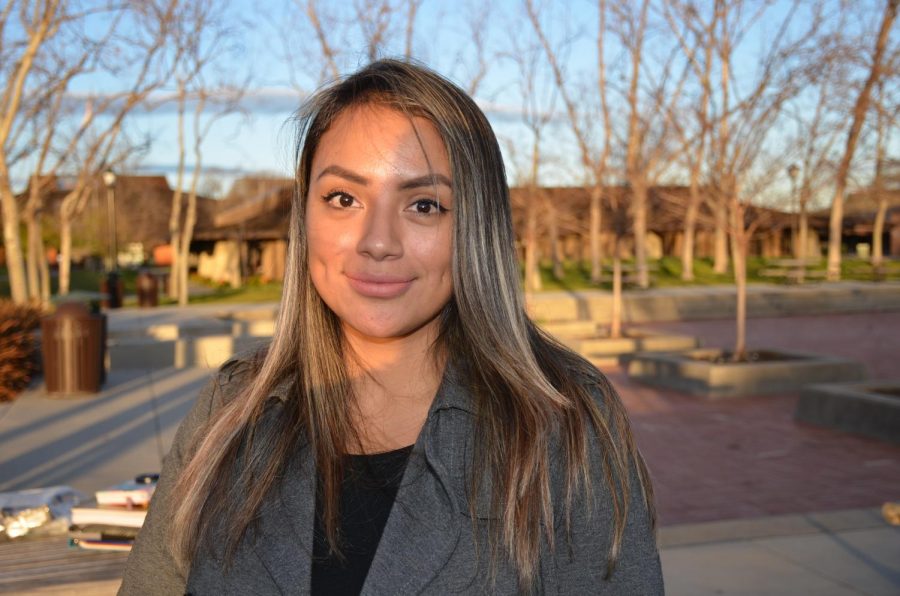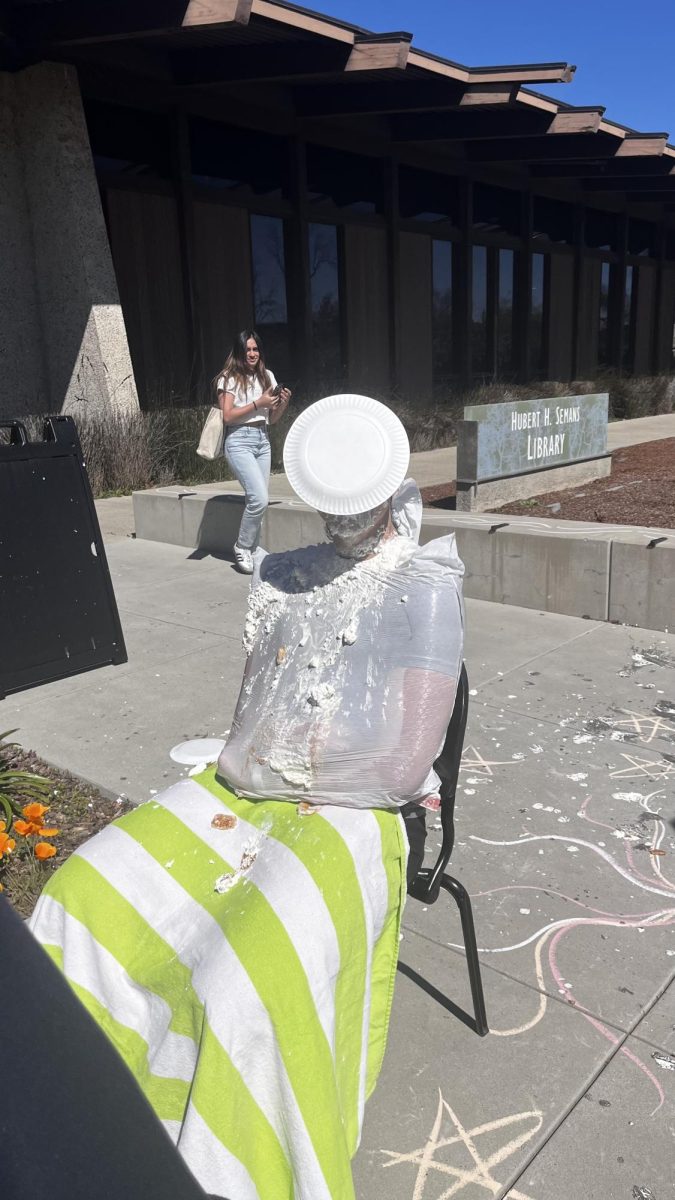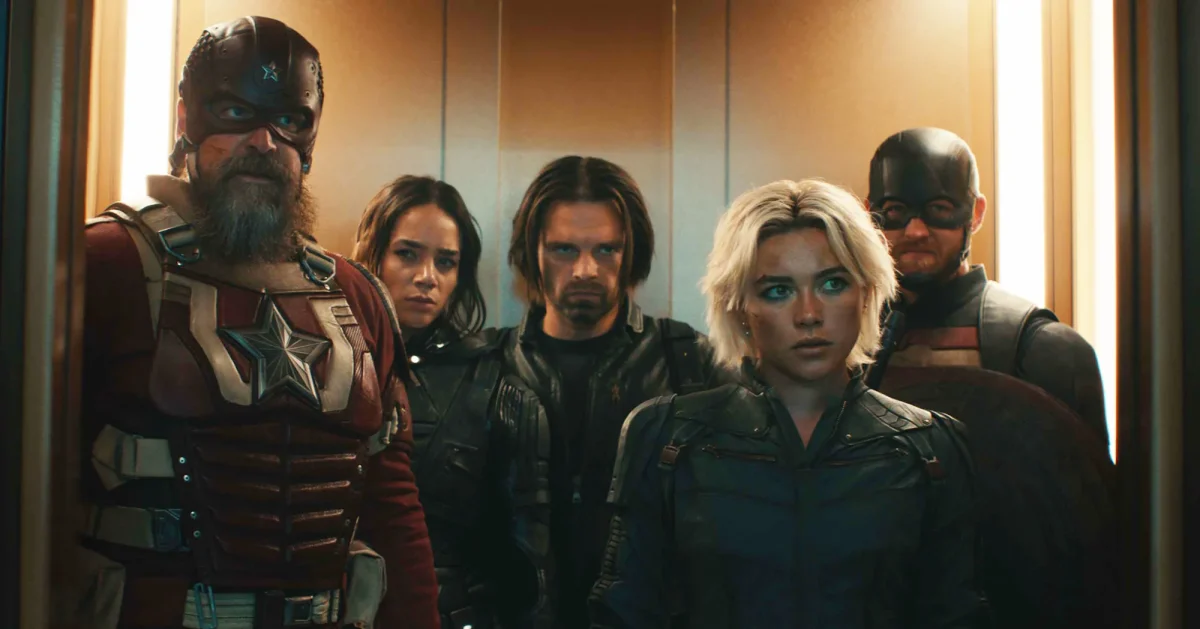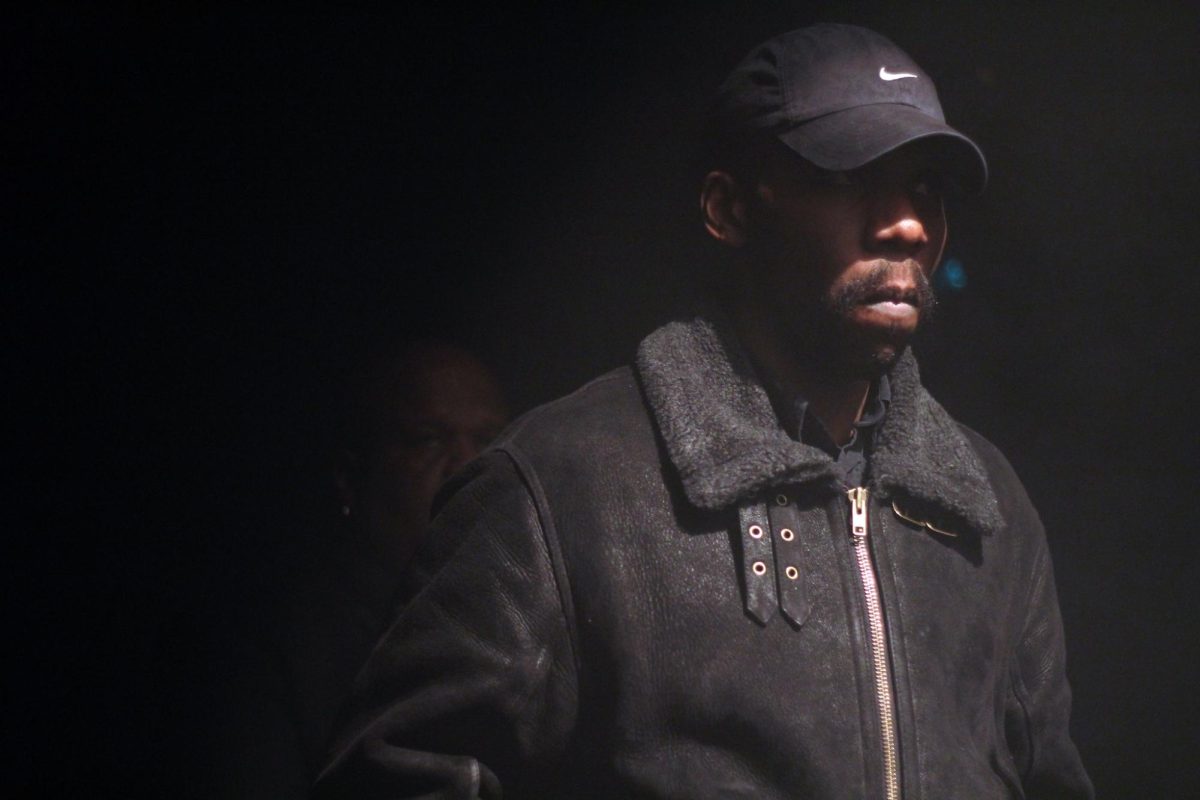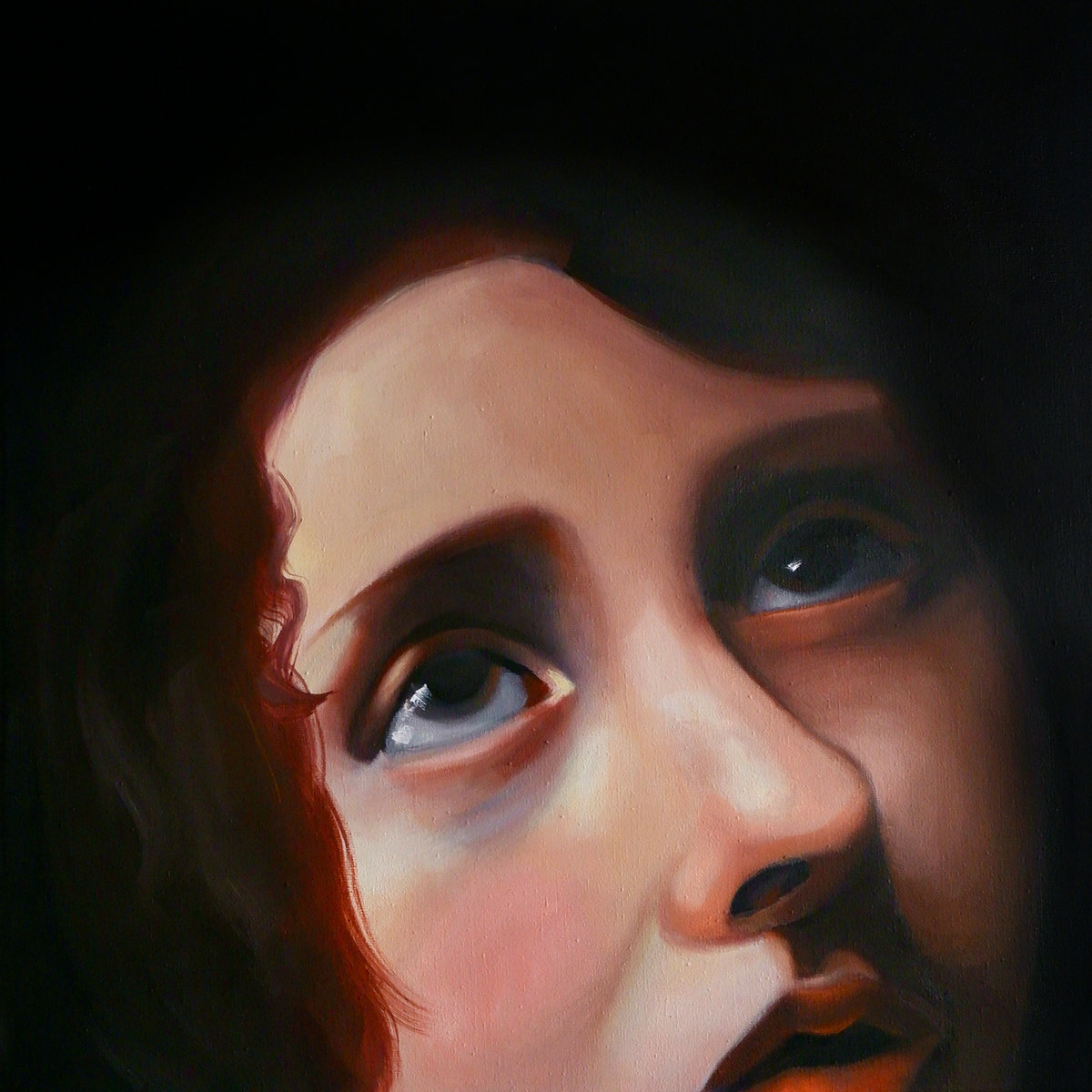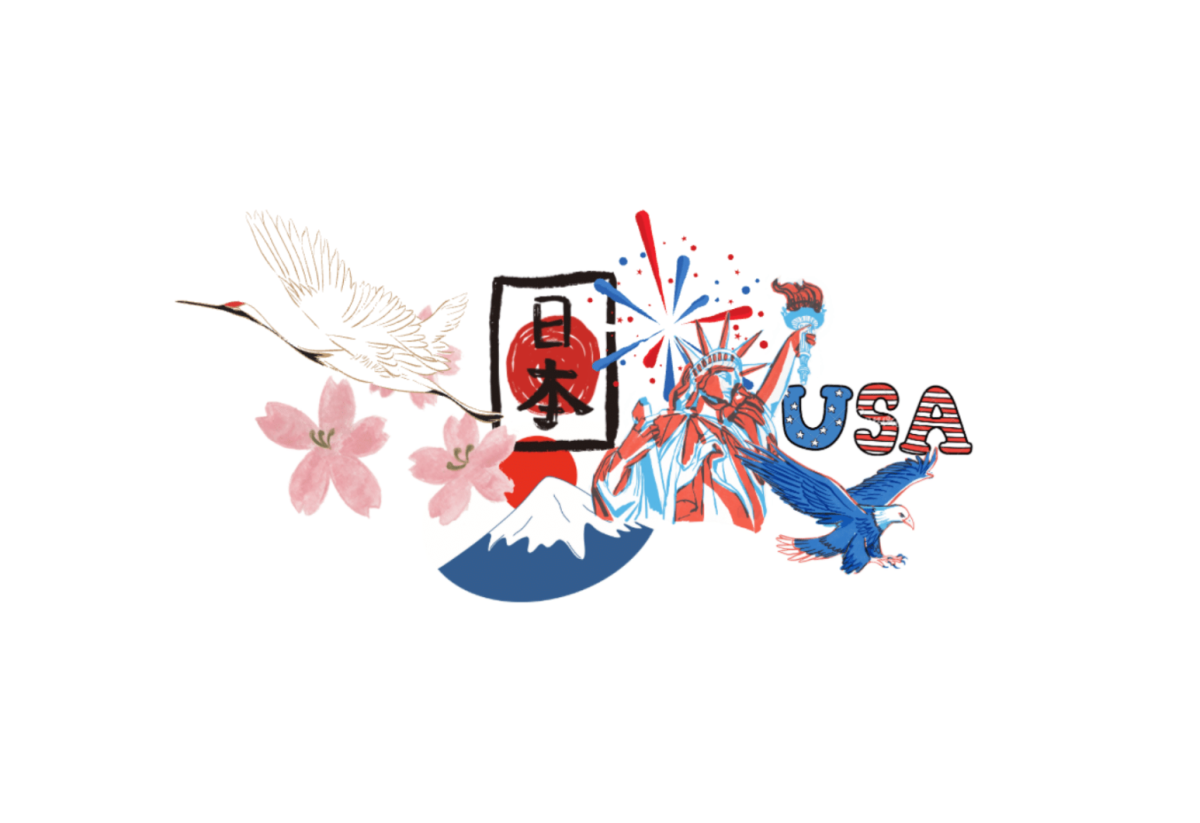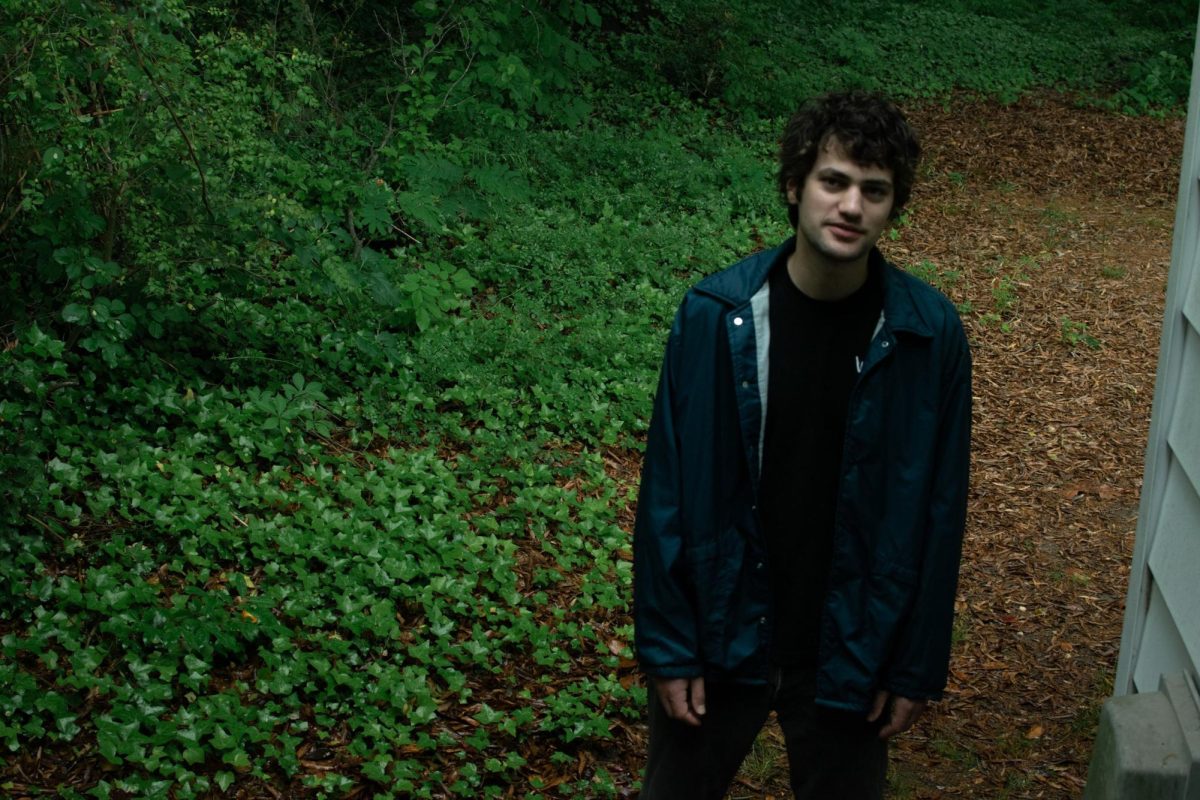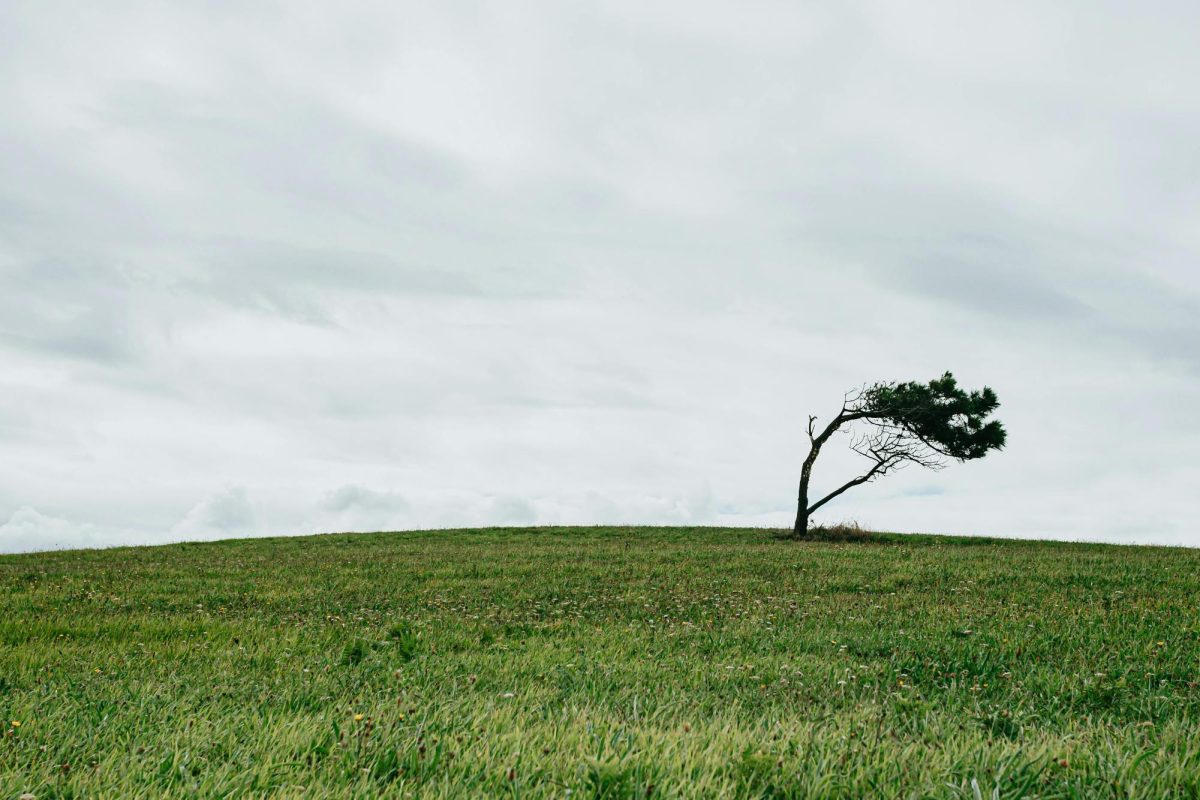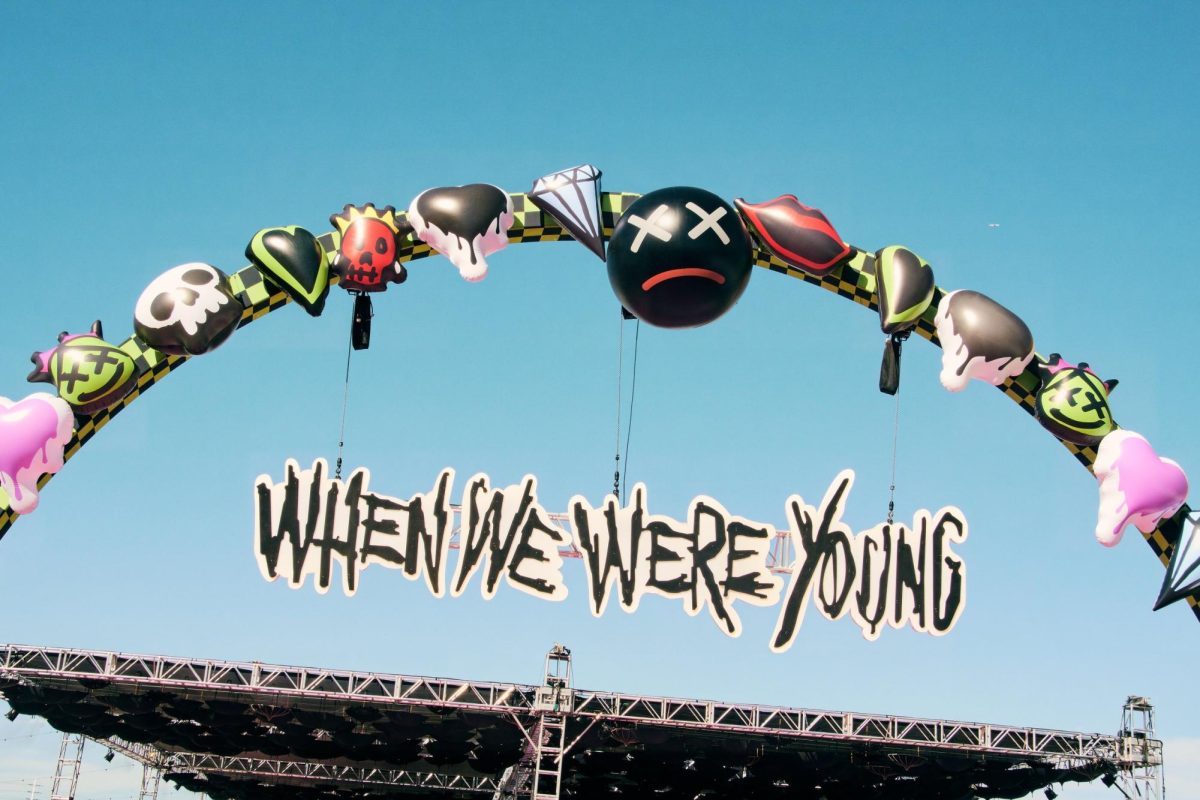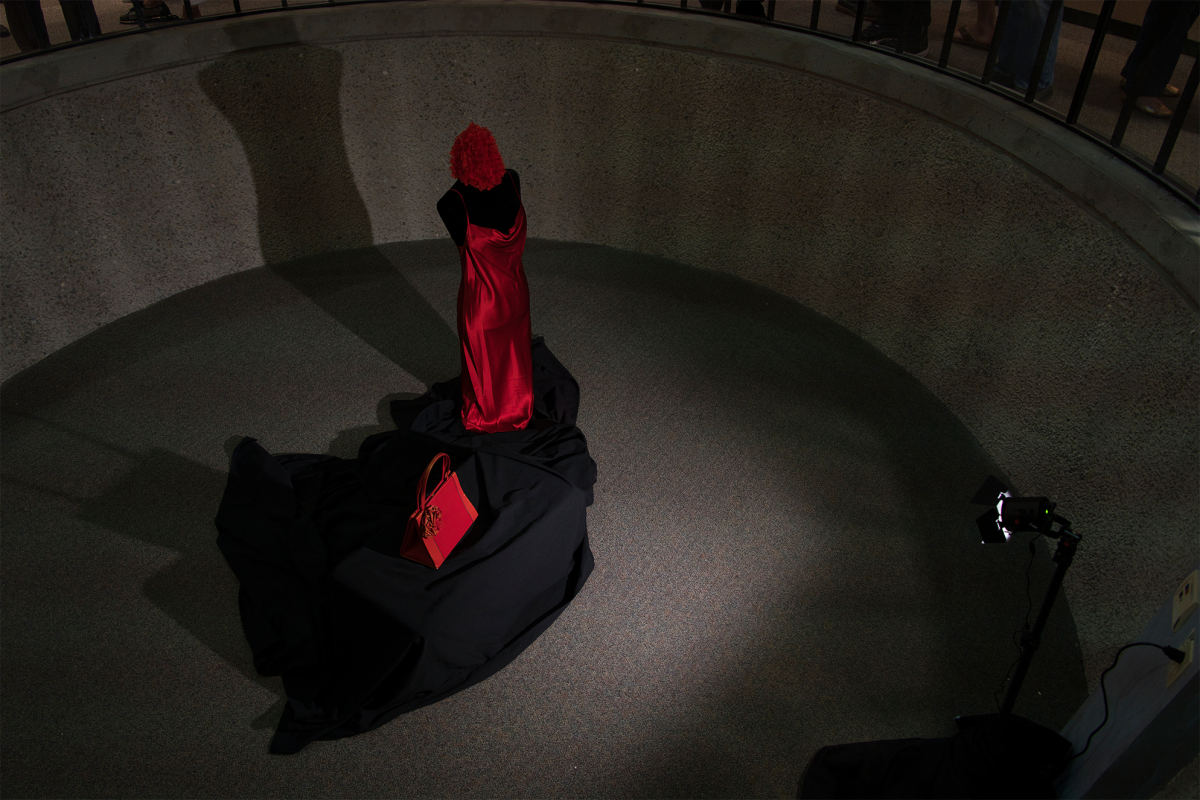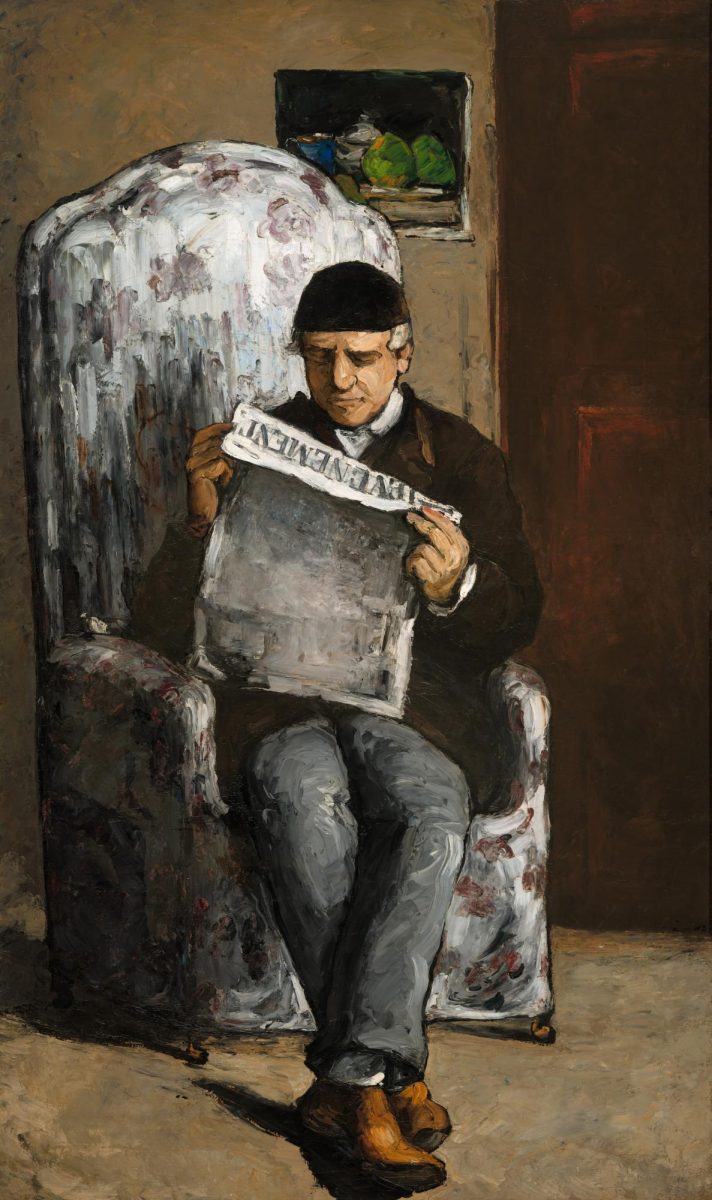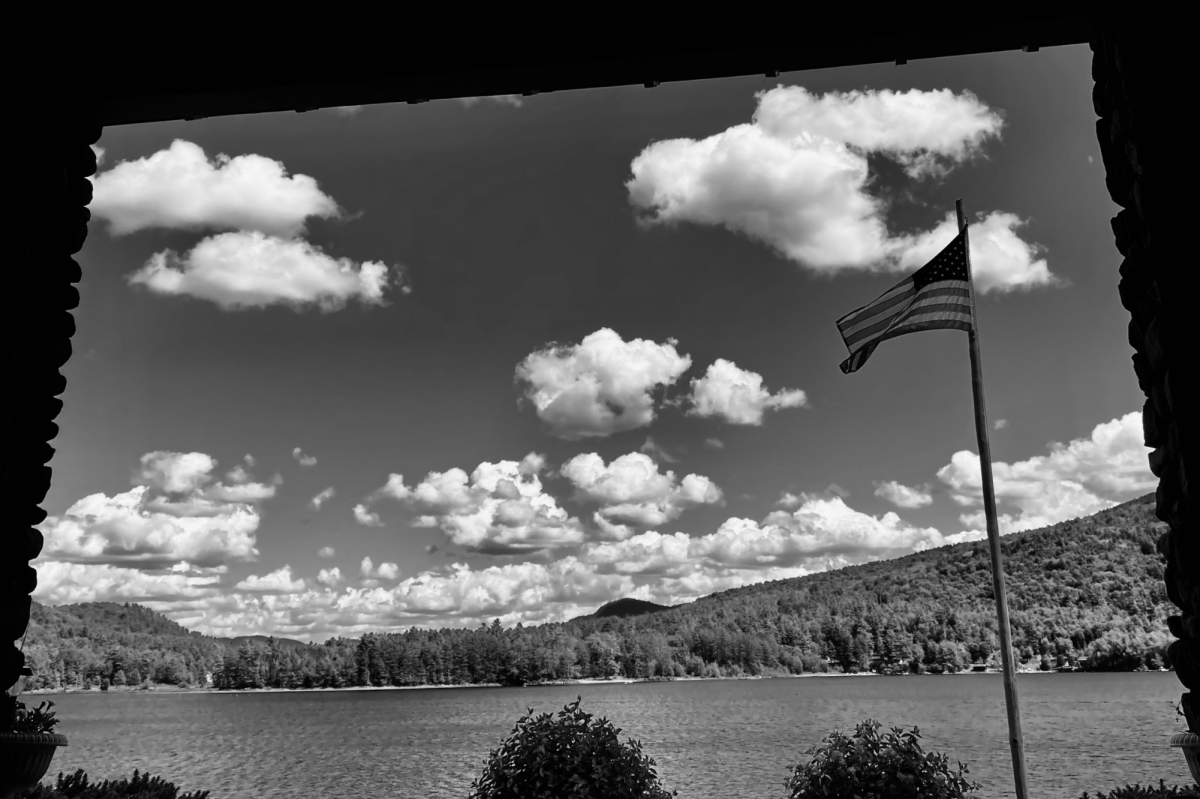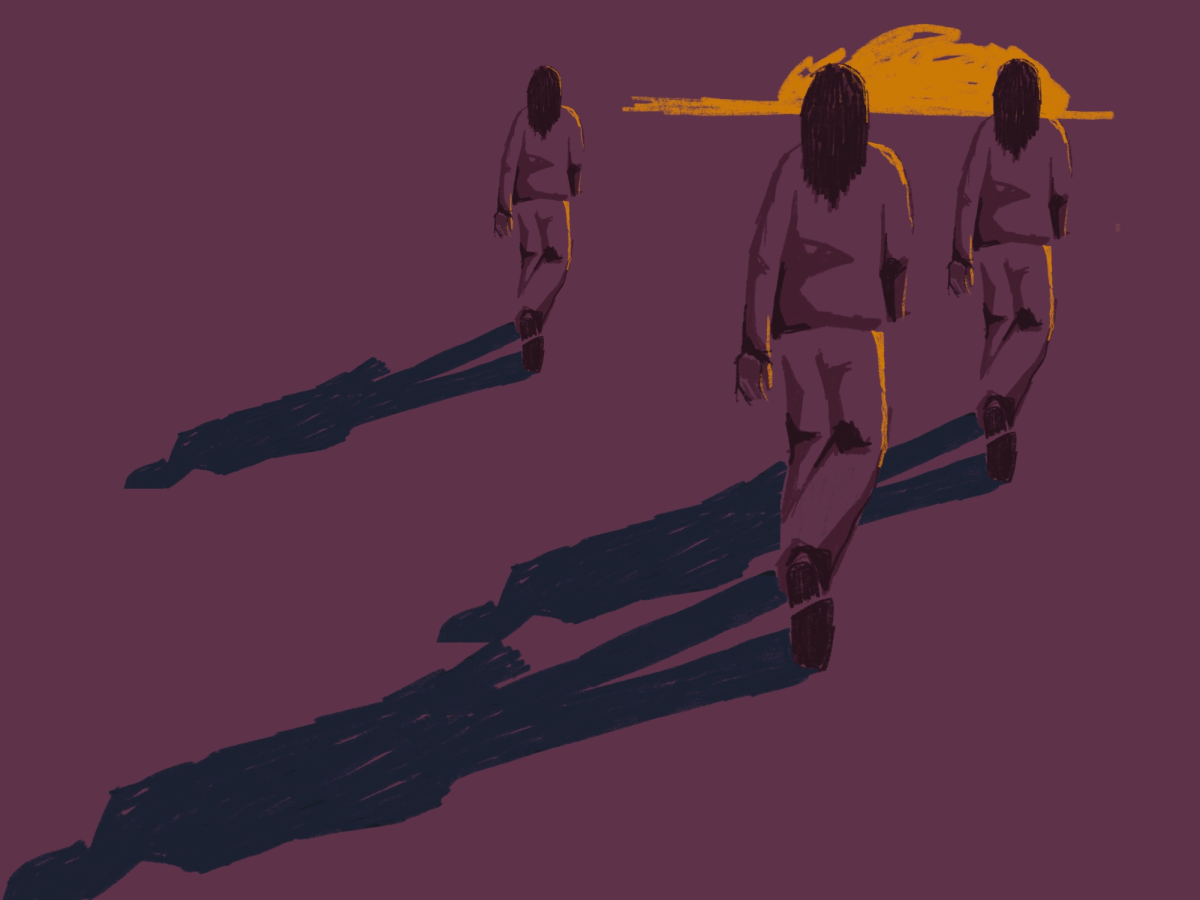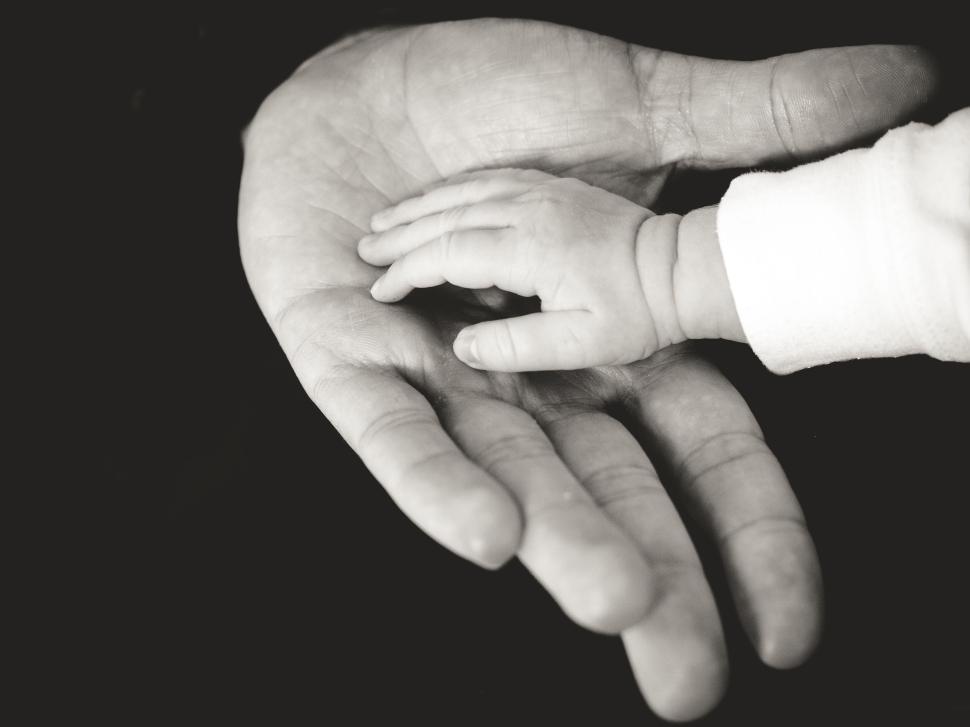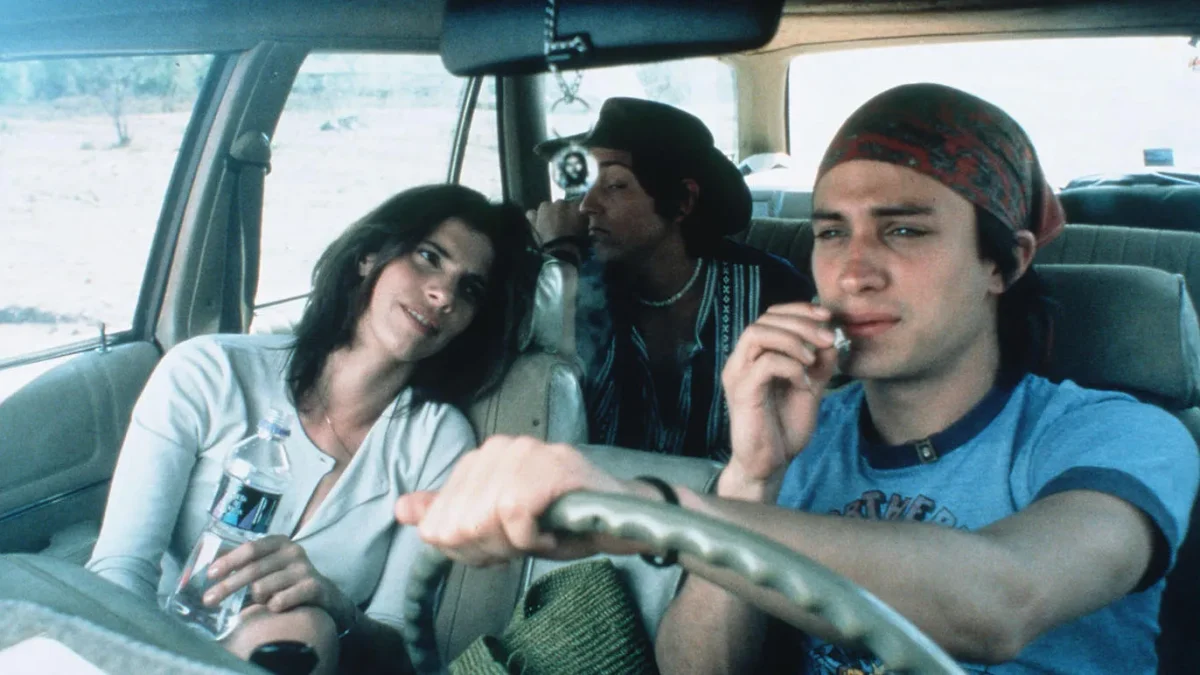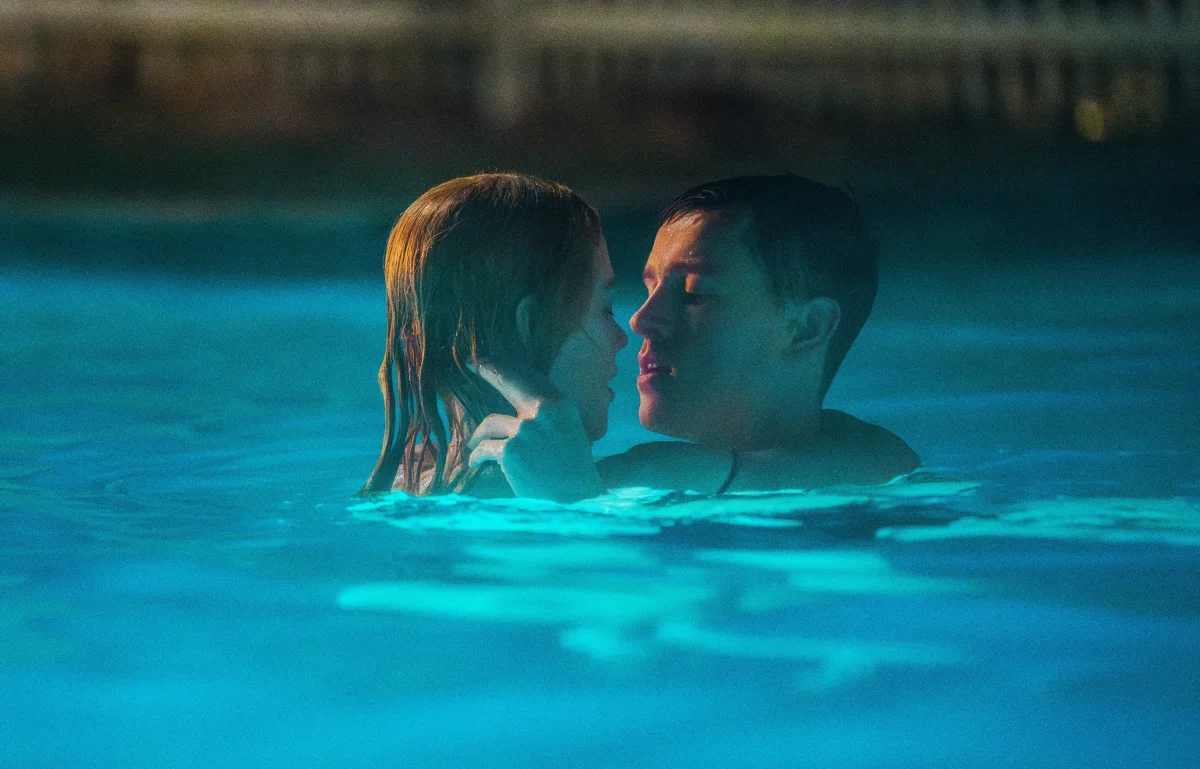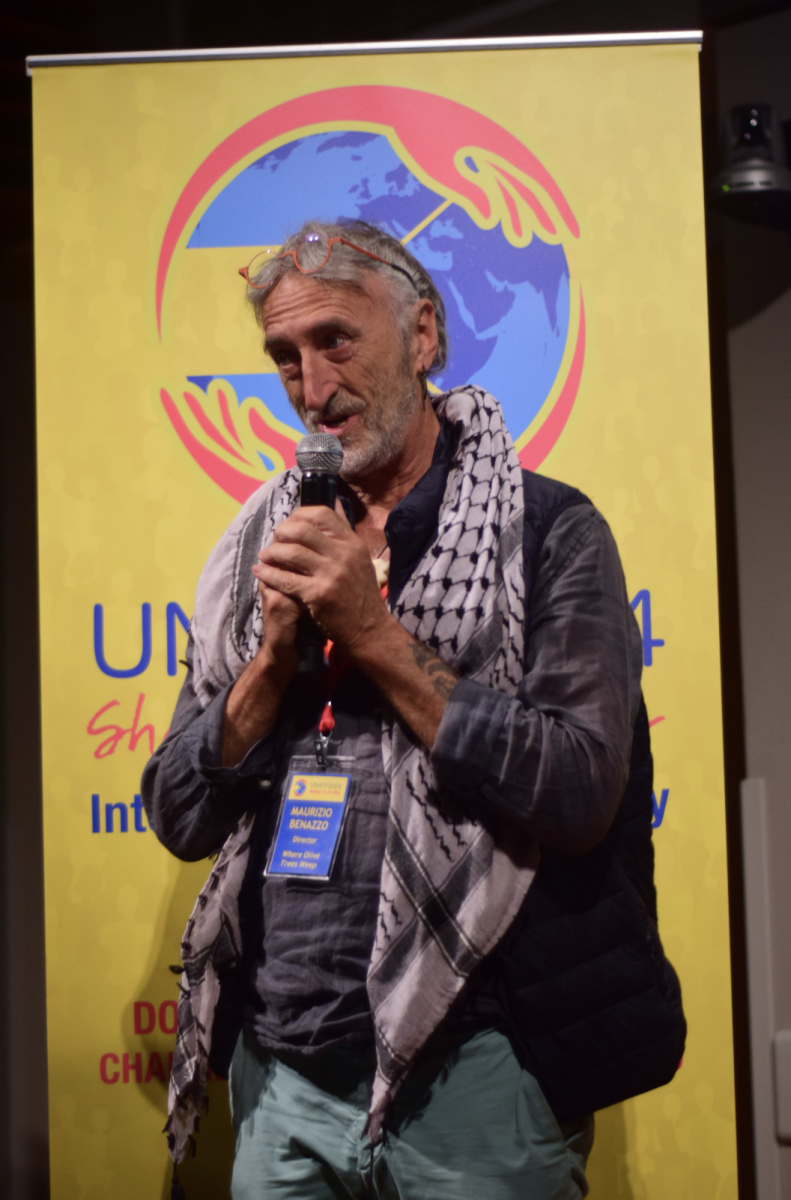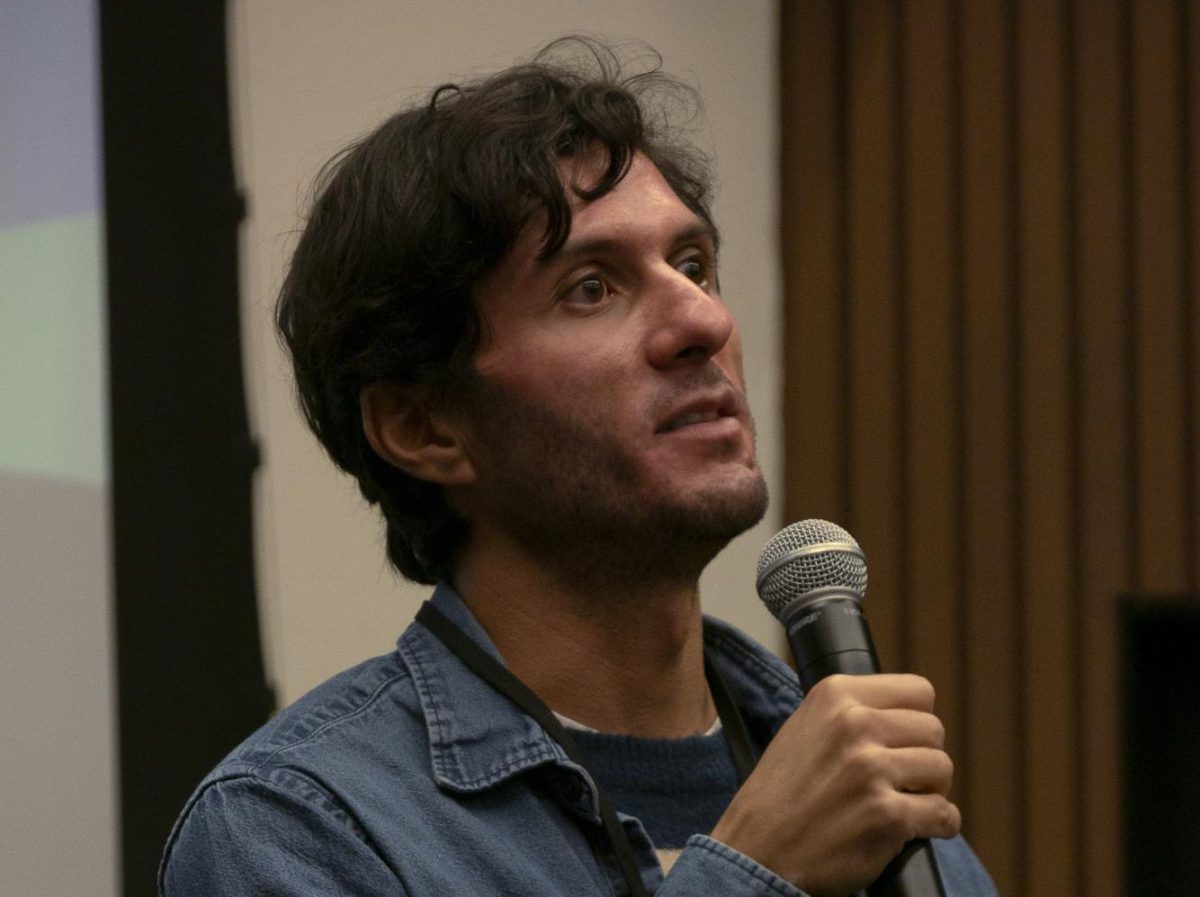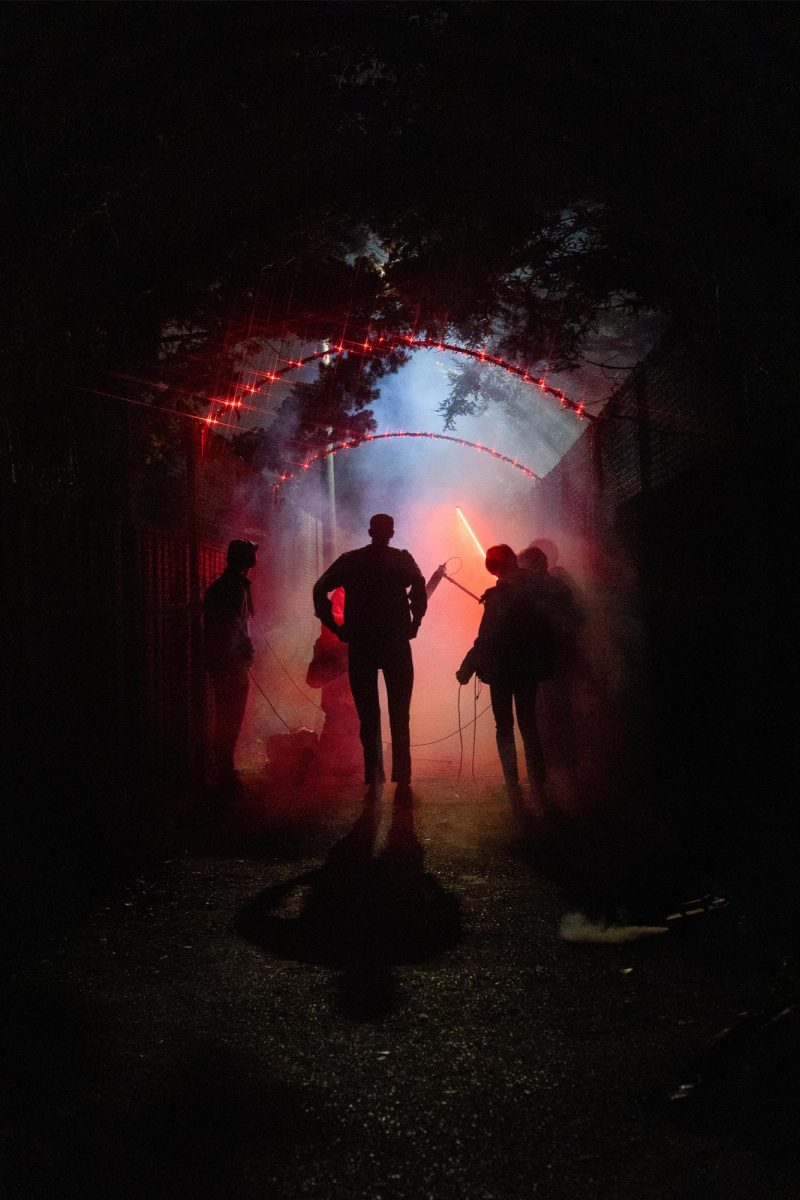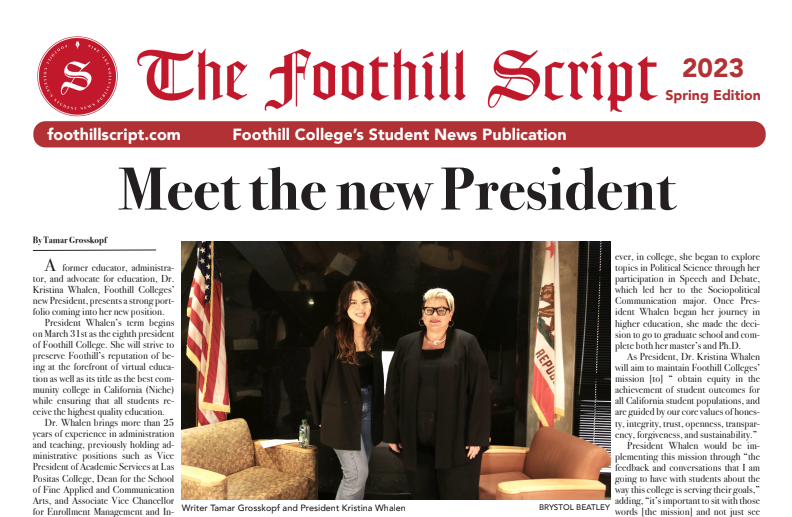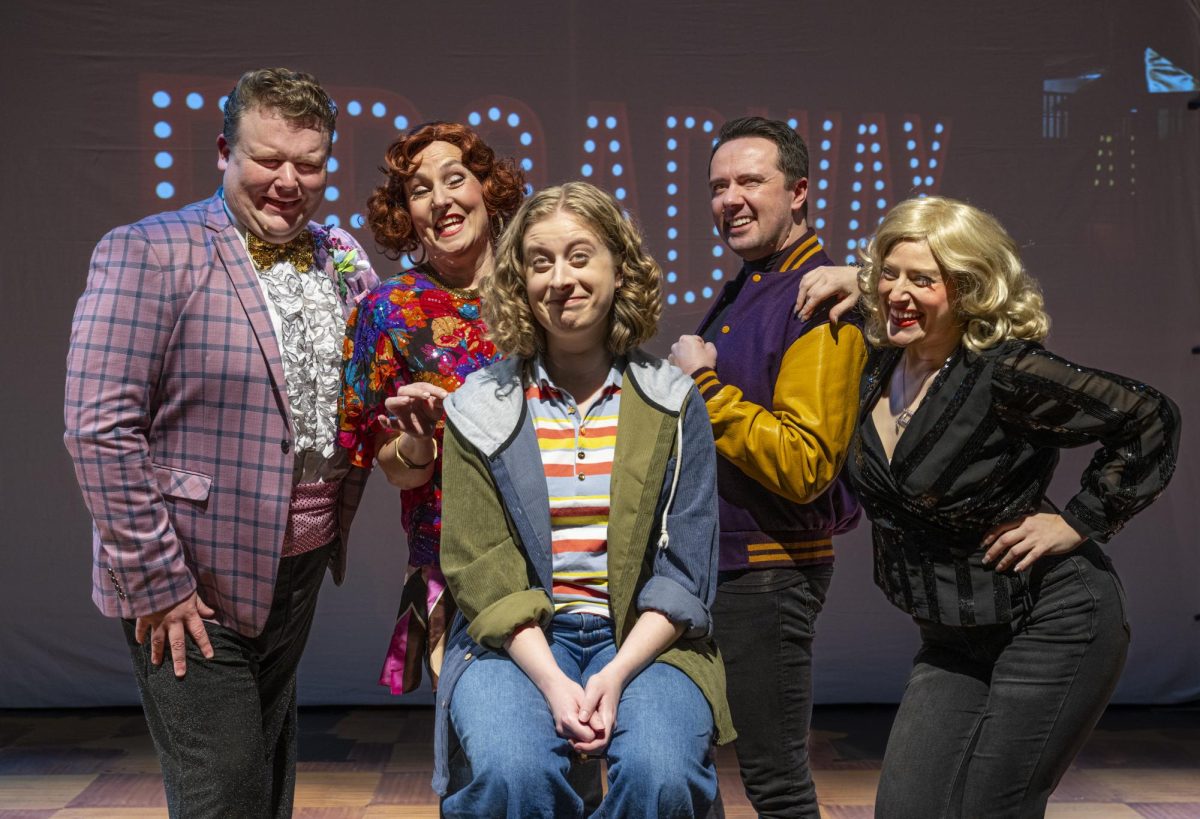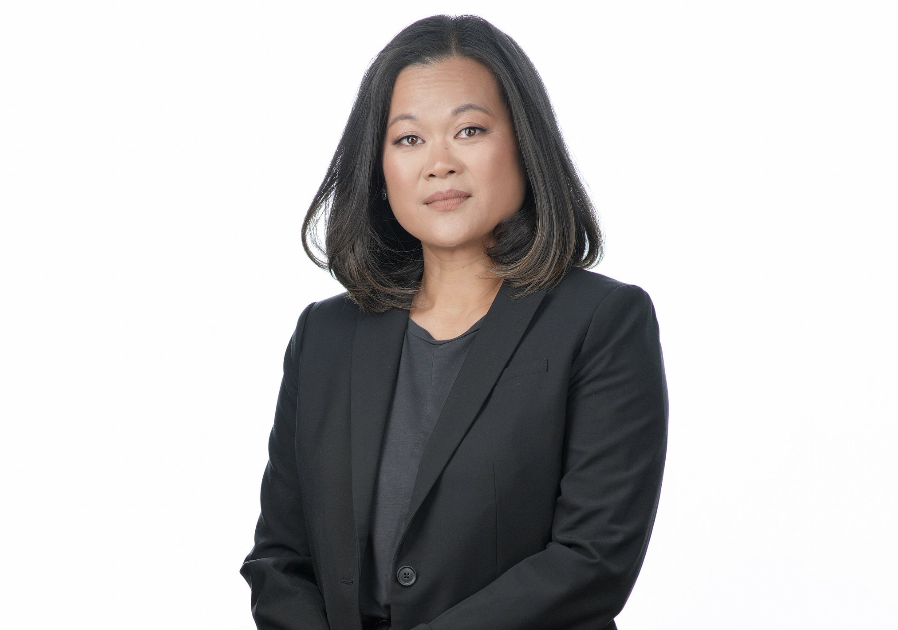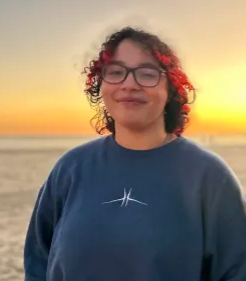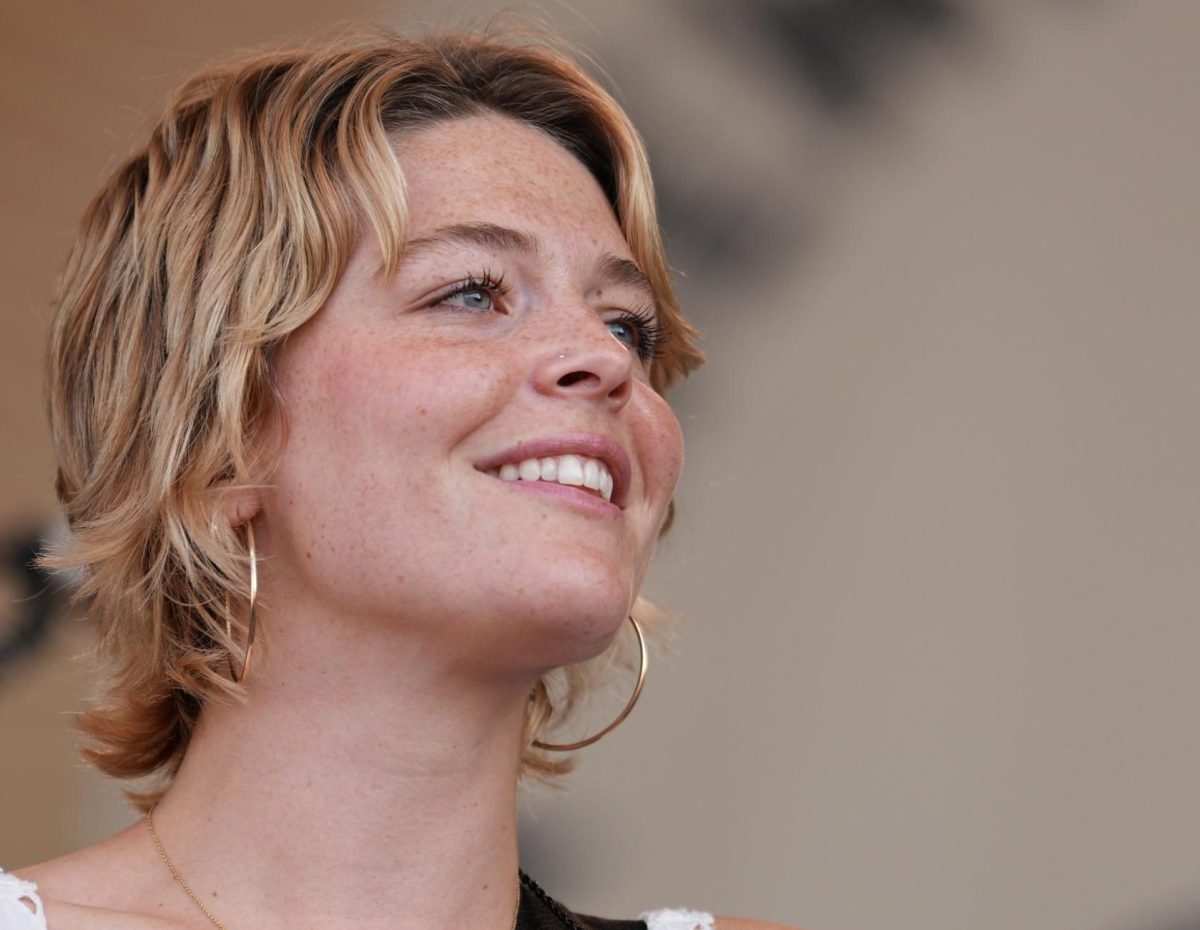
Jose and Alex discuss details of the the mural.
On June 14th, The Script got the chance to cover the unveiling of a mural at the Elmwood Men’s Correctional Facility. This mural was created during the course of an art class that Foothill College offered to inmates in the prison last Fall, and it was taught by our very own Jordan Fong.
Our Editor-in-Chief, Managing Editor, one of our Photographers, and myself visited the facility that Friday. Reilly Johnson, a Rehabilitation Officer at Elmwood, was our designated contact, and gave us a brief tour of the prison before we made our way to the mural. During the tour we learned that college courses are not a rarity at this location, and we passed by classrooms filled with eager learners. All throughout the courtyard, dotted with trees and other greenery, students walked about with textbooks and notebooks in hand as they made their way to classes.
When arriving in the room that the mural was painted in, we got the chance to speak to a multitude of inmates who shared their experiences at Elmwood and with the courses offered. Most had taken classes from Mission College, and a good number were enrolled in Foothill College classes. They expressed how these opportunities made them feel like they had a chance to turn things around once they are released, instead of just falling into a similar cycle that would lead them to Elmwood or another prison once more.
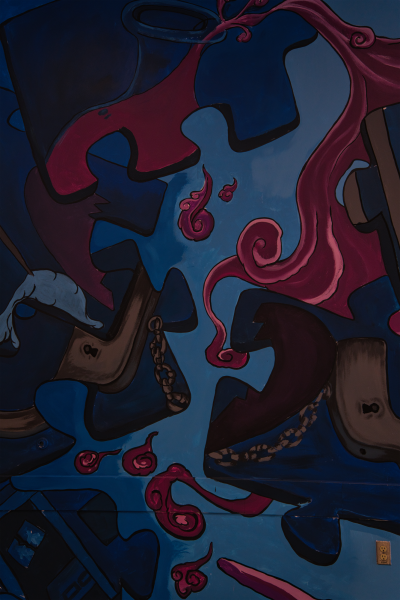
Details of the mural.
Among these inmates was the only one remaining from the art class last Fall, Jose. He also had experiences to share, and detailed how he had completed multiple business and finance classes in addition to the one in which the mural was painted. He shared similar thoughts as the other students on how he felt prepared to re-enter regular society in part due to these classes. He also presented the mural to us, and explained some of the elements within.
It is a sprawling horizontal piece with two distinct themes. To the far left represents the times that led them to Elmwood and incarceration. Disorganized puzzle pieces, fog, darker color tones, and more decorate this side, leading into the centerpiece which depicts a tree with three faces. On each side a branch reaches out, with the rightmost one leading into golden and yellow shades. The previously haphazard puzzle pieces begin to slot together, and you can see a traditional school building near the bottom half of the mural. As the puzzle pieces begin to fit perfectly, imagery such as diplomas, graduation, faith, and family are represented as the mural reaches its end.
During the unveiling of the mural, I got the chance to talk to that one remaining student, Jose, who worked on it last Fall. Jose expressed gratitude for the opportunity to take part in this class and create this mural, but also expressed some disappointment that the final version of the mural did not entirely reflect all of the students’ original creative vision. The mural, which was meant to reflect their journeys, had included references to their cultural heritage, experience with poverty and narcotics, violence growing up in difficult situations, and much more. Jose expressed confusion with some aspects of the mural, and described parts as “their experiences told through someone else’s eyes.”
This disconnect leads to further consideration about art inside of an institution like a prison, and how there are many checks and balances that can unintentionally lead to creativity being limited. One of the central elements that Jose said remained relatively untouched from the students’ ideas was the tree in the middle, and how it had two branches reaching from each side to the past and the future. He mentioned how one of the students from the Fall class had done work as a tattoo artist, and contributed to the facial imagery on it.
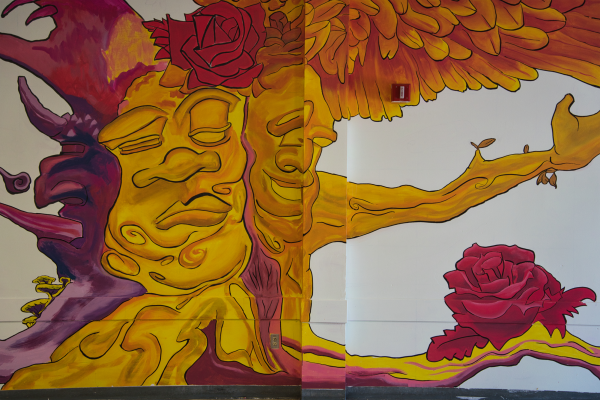
The tree connecting each side of the mural.
Even with the disappointment of some aspects of the mural, Jose still had overall positive feelings about the experience, and especially the right side of the mural, despite it perhaps not including everything they had originally intended. He liked the hands praying to God, and also spoke positively about the graduation caps. He mentioned how he never thought graduating from college was something he could do when he was younger, but now it feels possible for the first time.
Jordan and Reilly Johnson were open to many questions afterward, and were excited and passionate about the work the students had done, even mentioning that they were already hoping to give the inmates a chance to create another, and possibly outside this time. They also briefly spoke about the process of creating the mural, and mentioned that there were concerns about some of the students attempting to sneak “inappropriate imagery” into the mural during the pitching process, and how they went about dealing with that.
The Script’s time at the Elmwood Men’s Correctional Facility was a positive one, and it was great to see how Foothill is making a difference in the lives of people who need it, and we hope to visit Elmwood again in the future.




